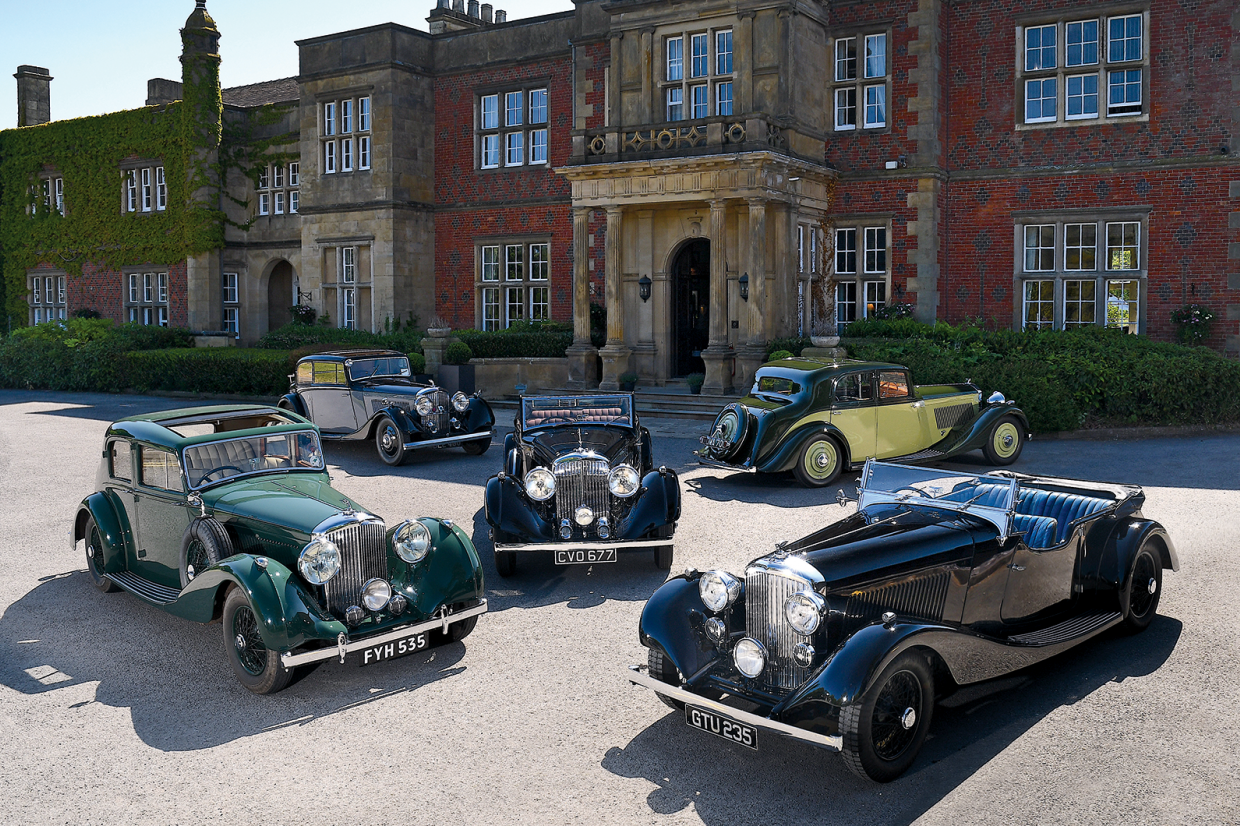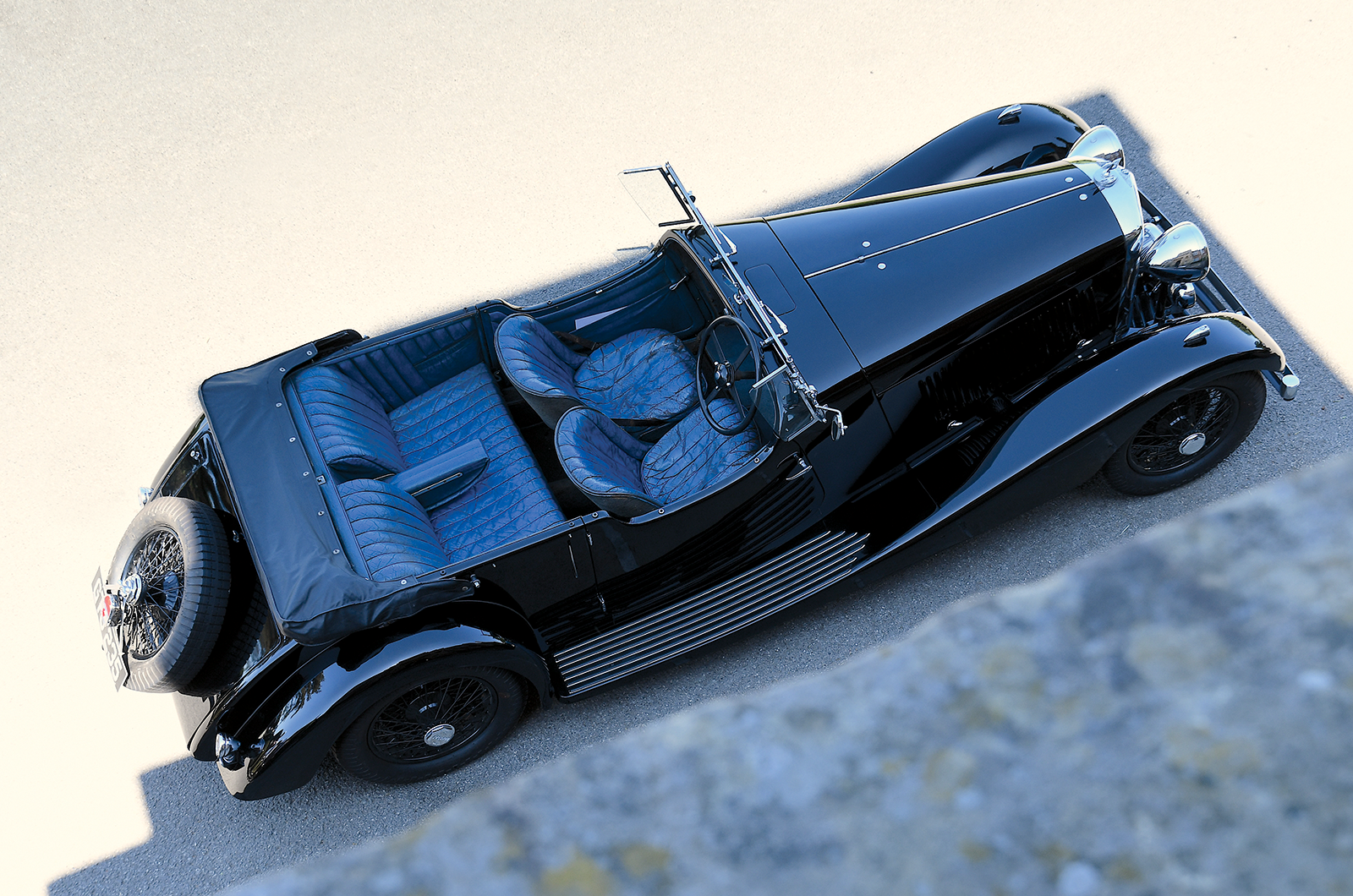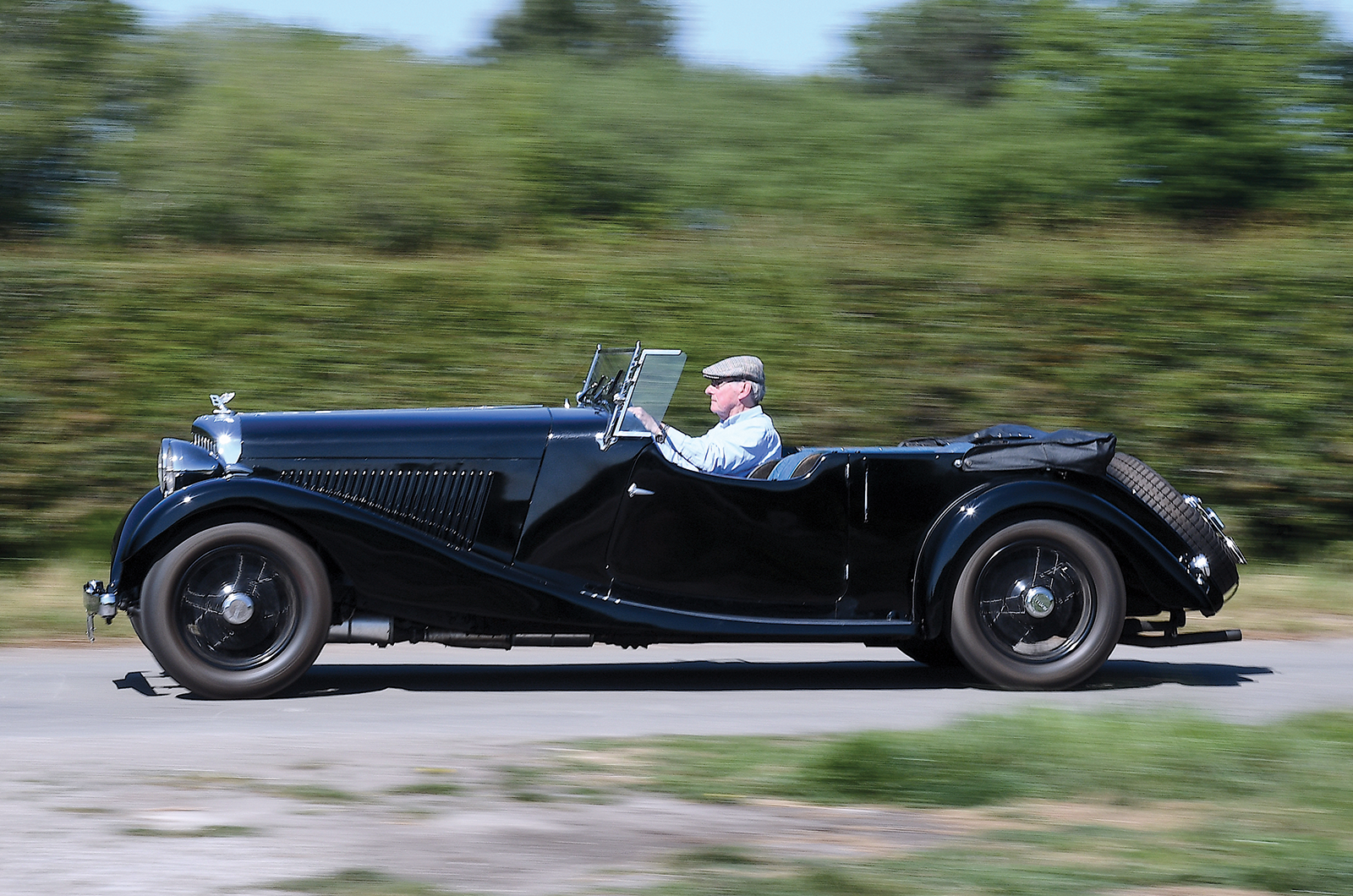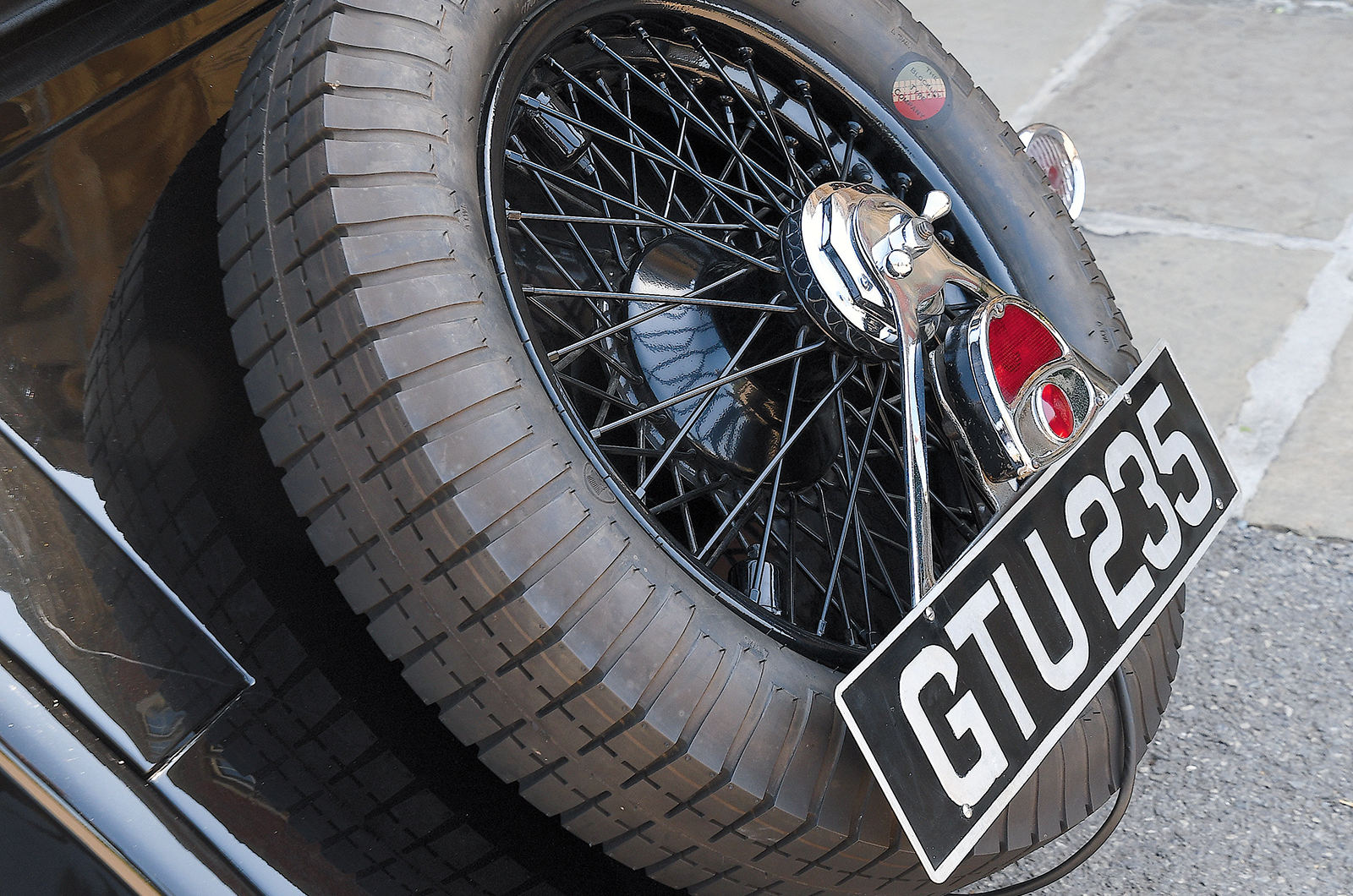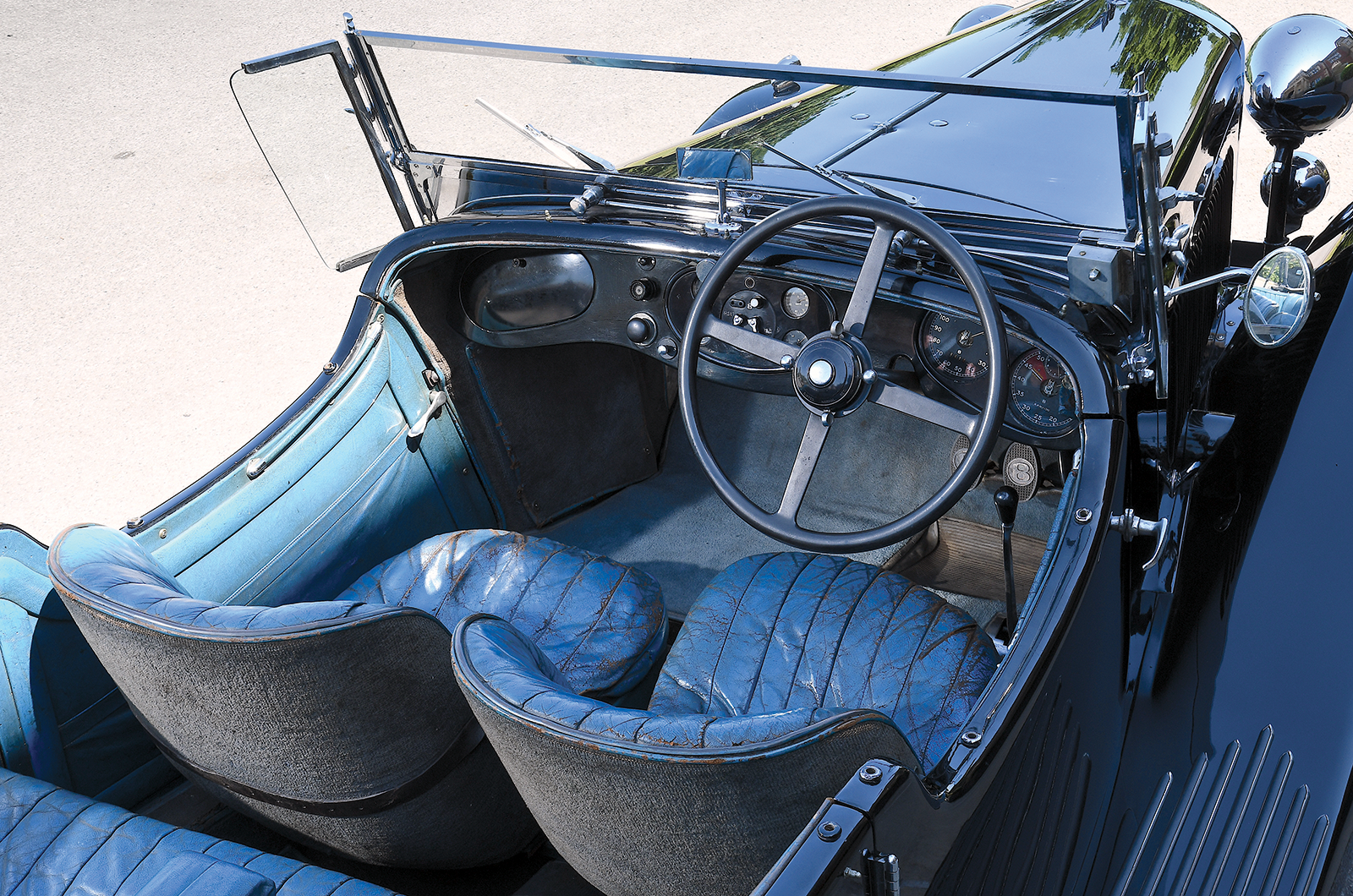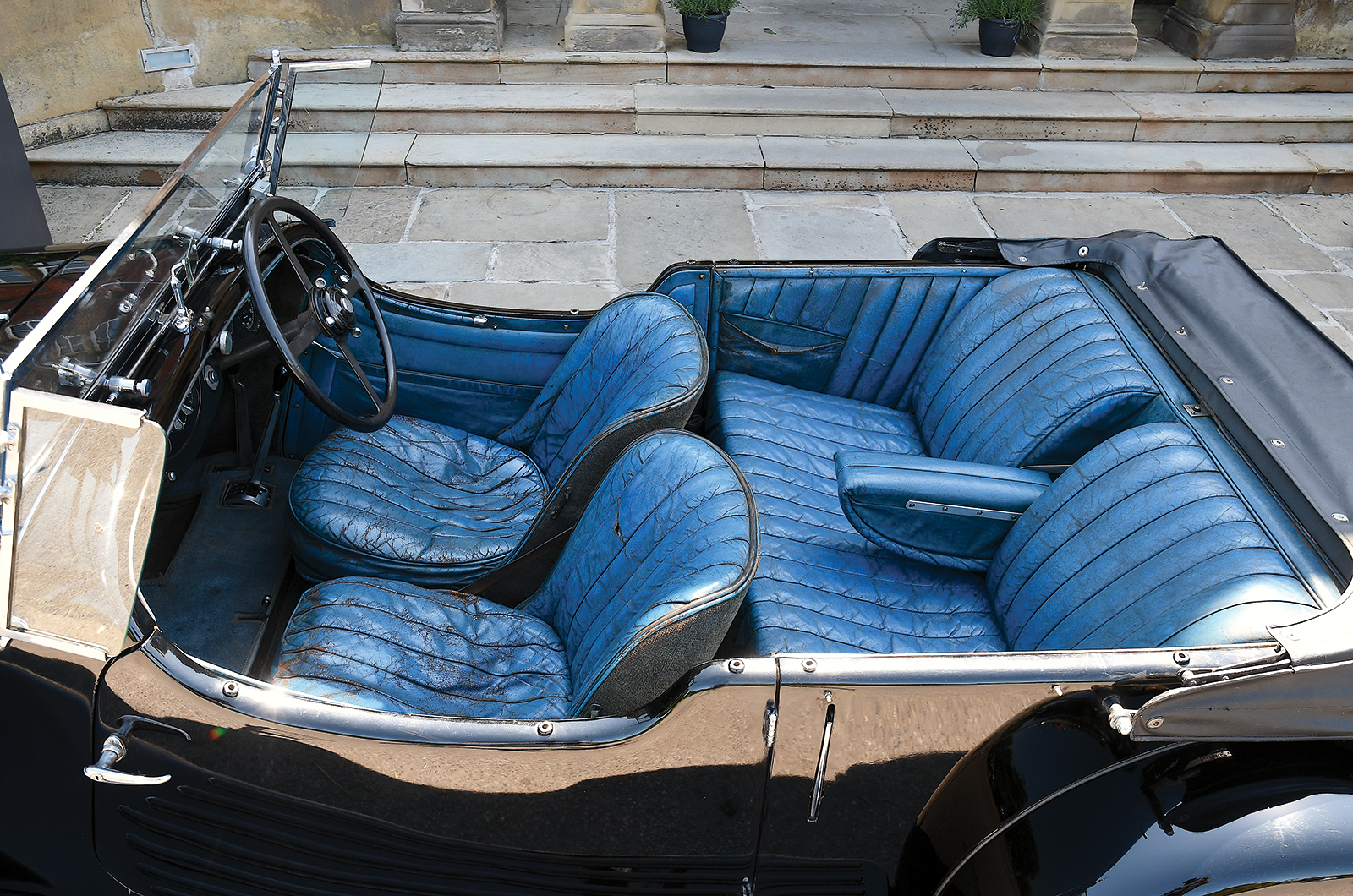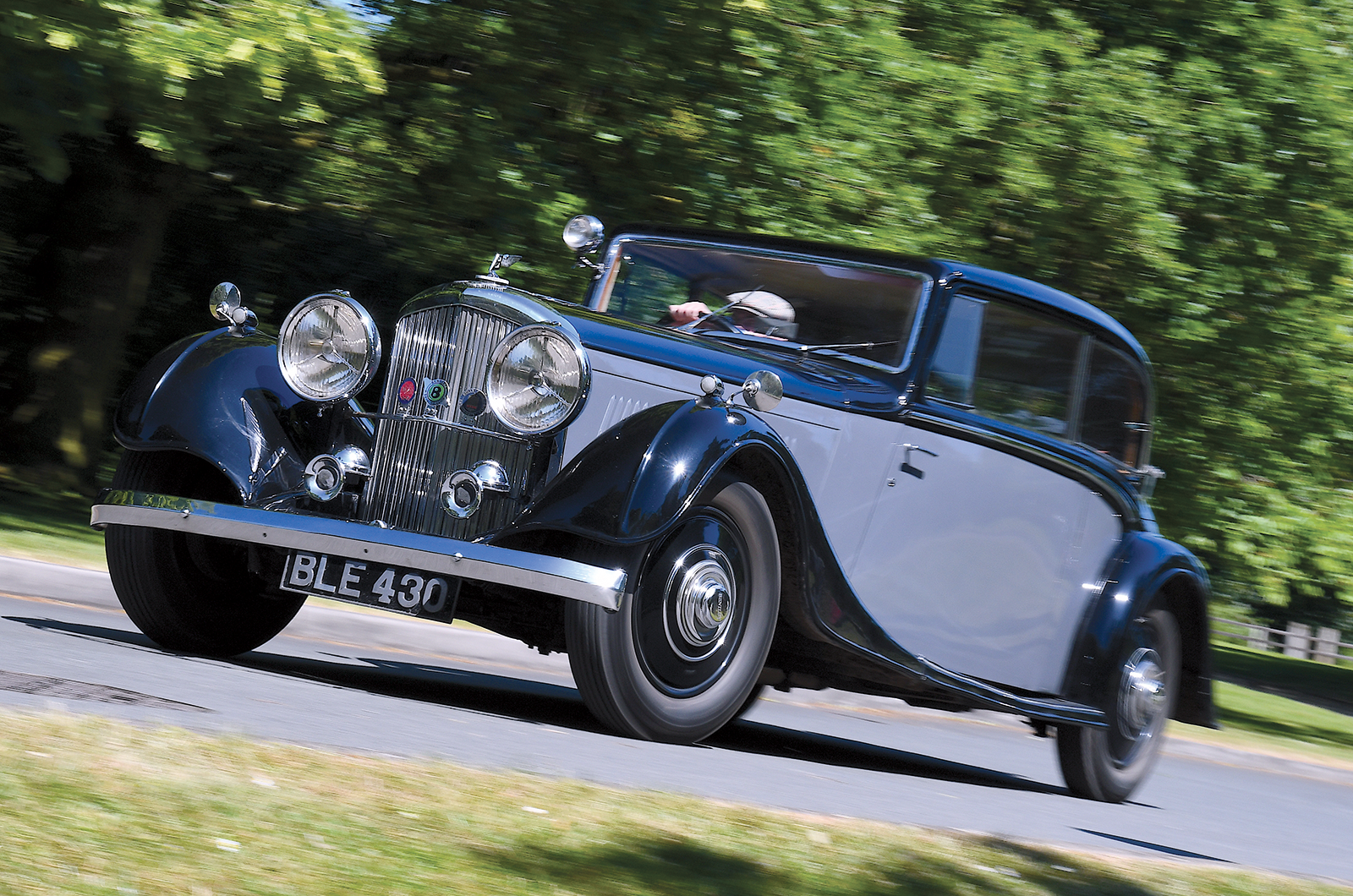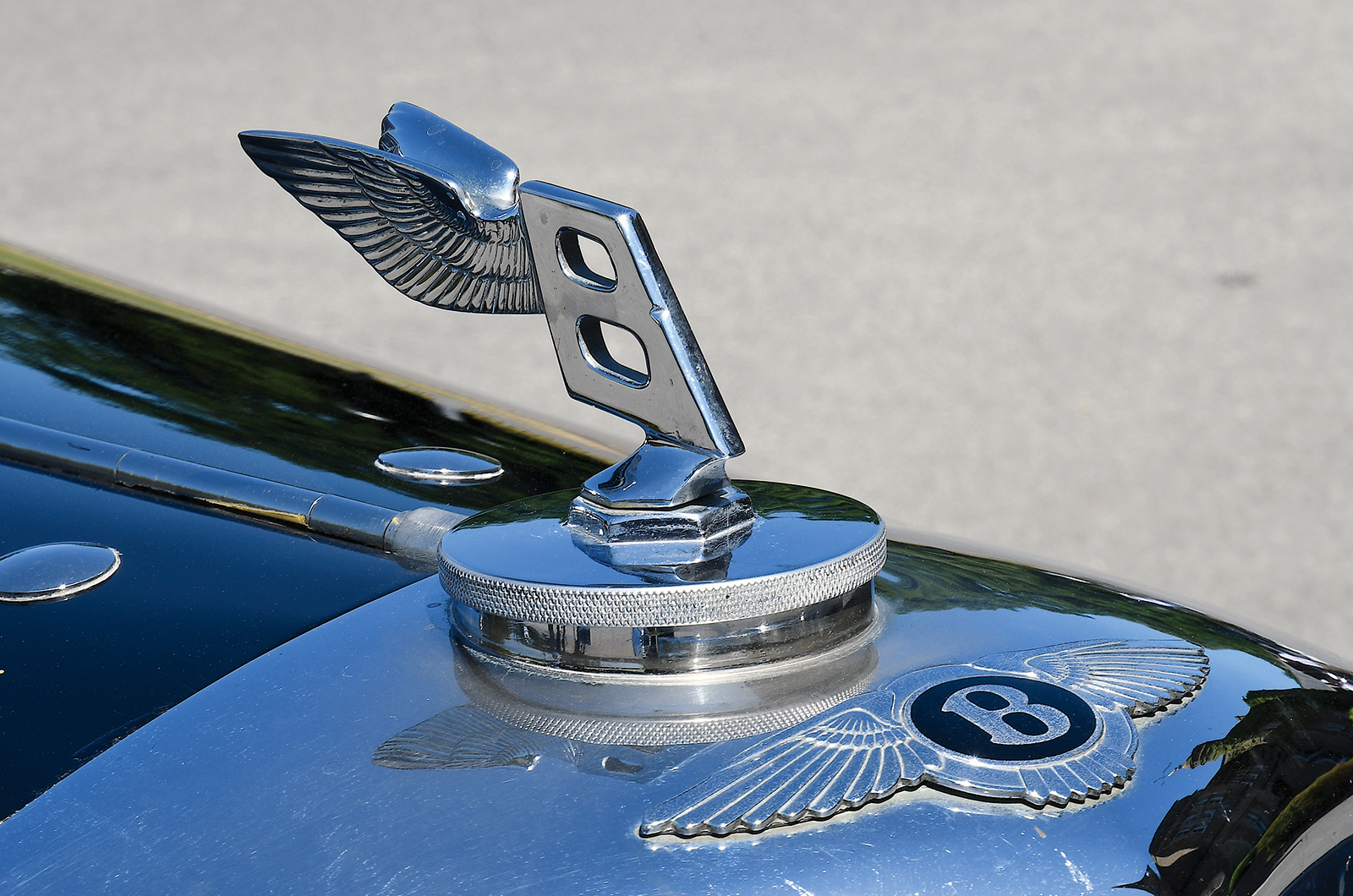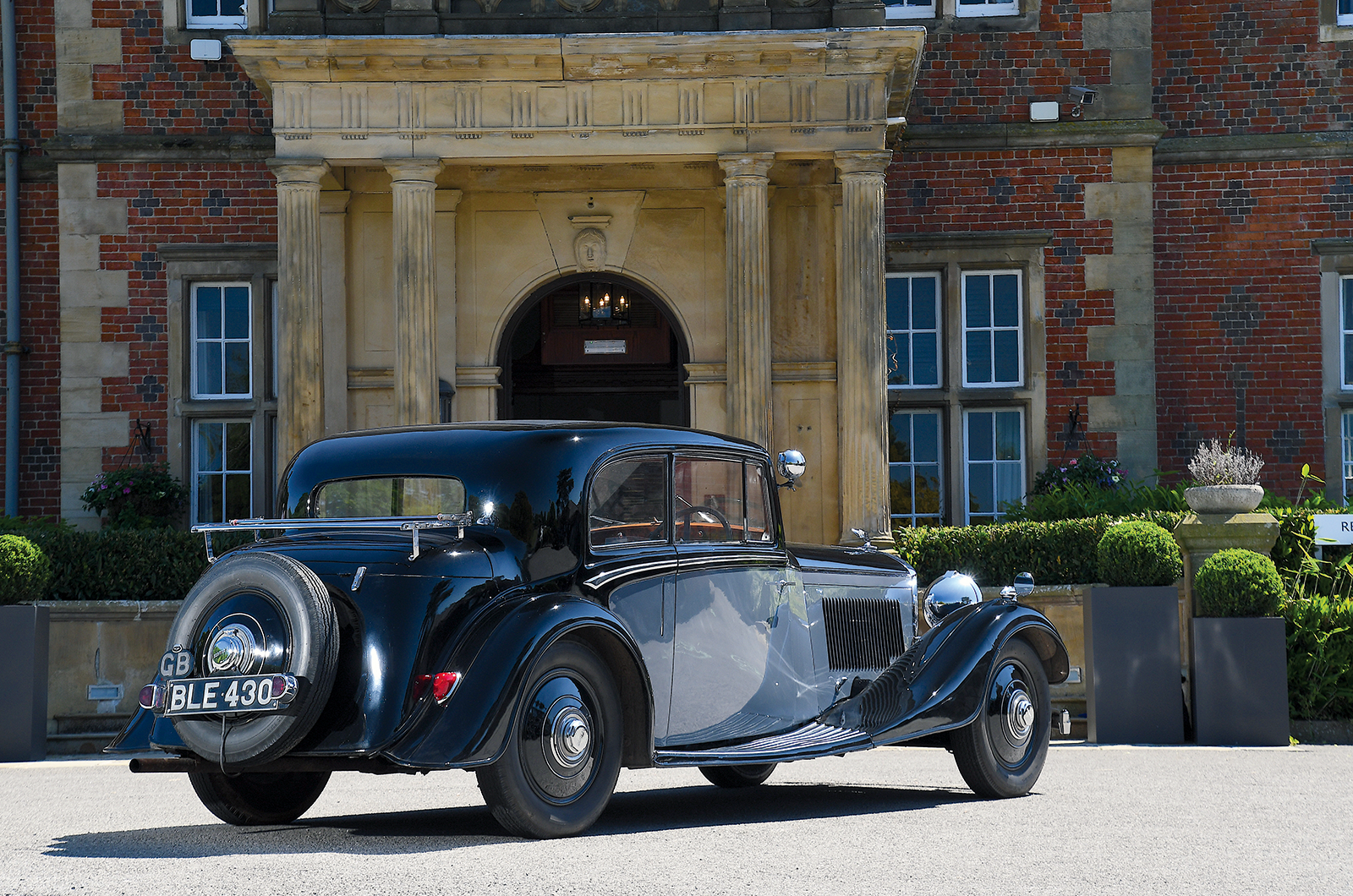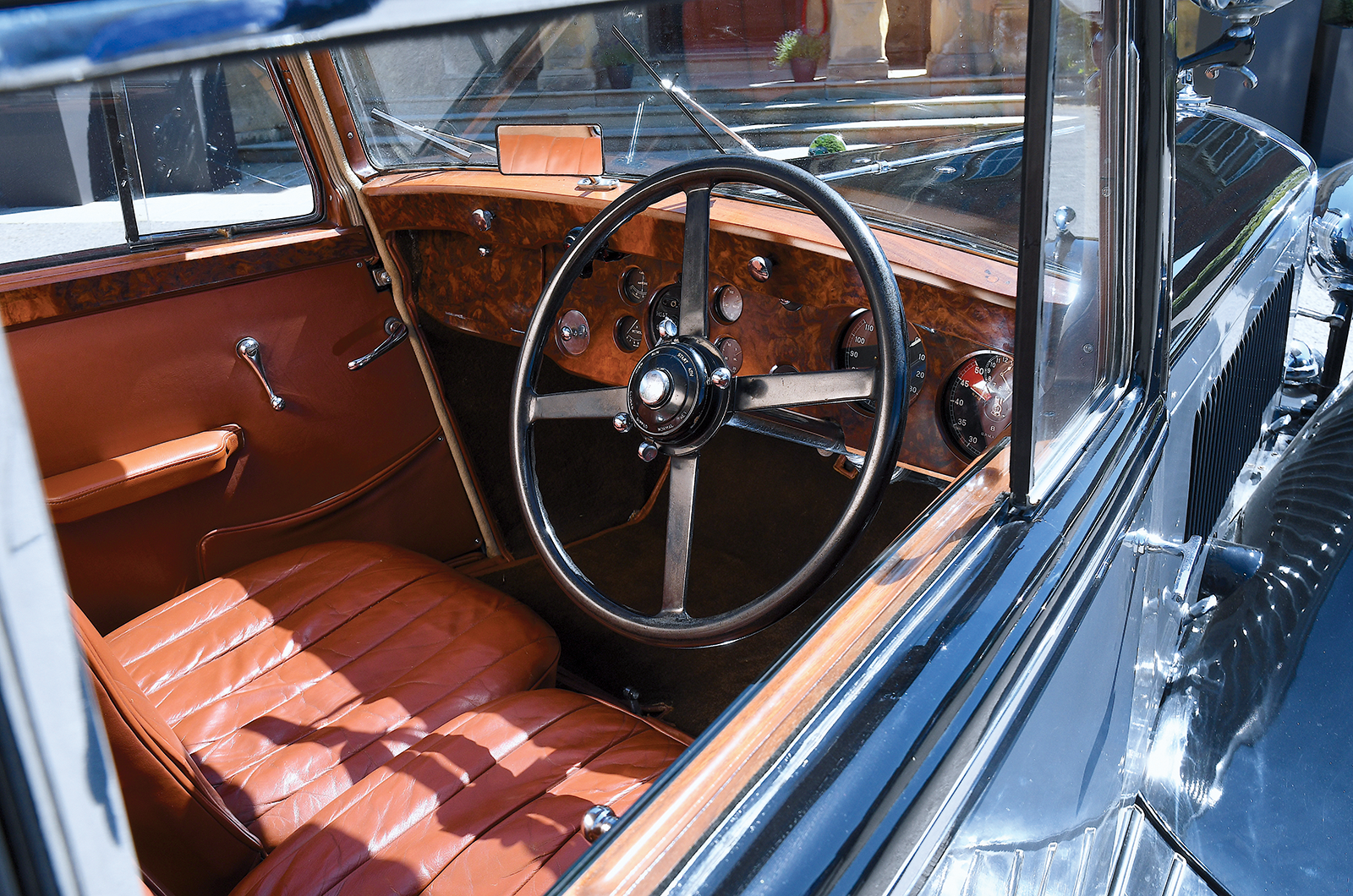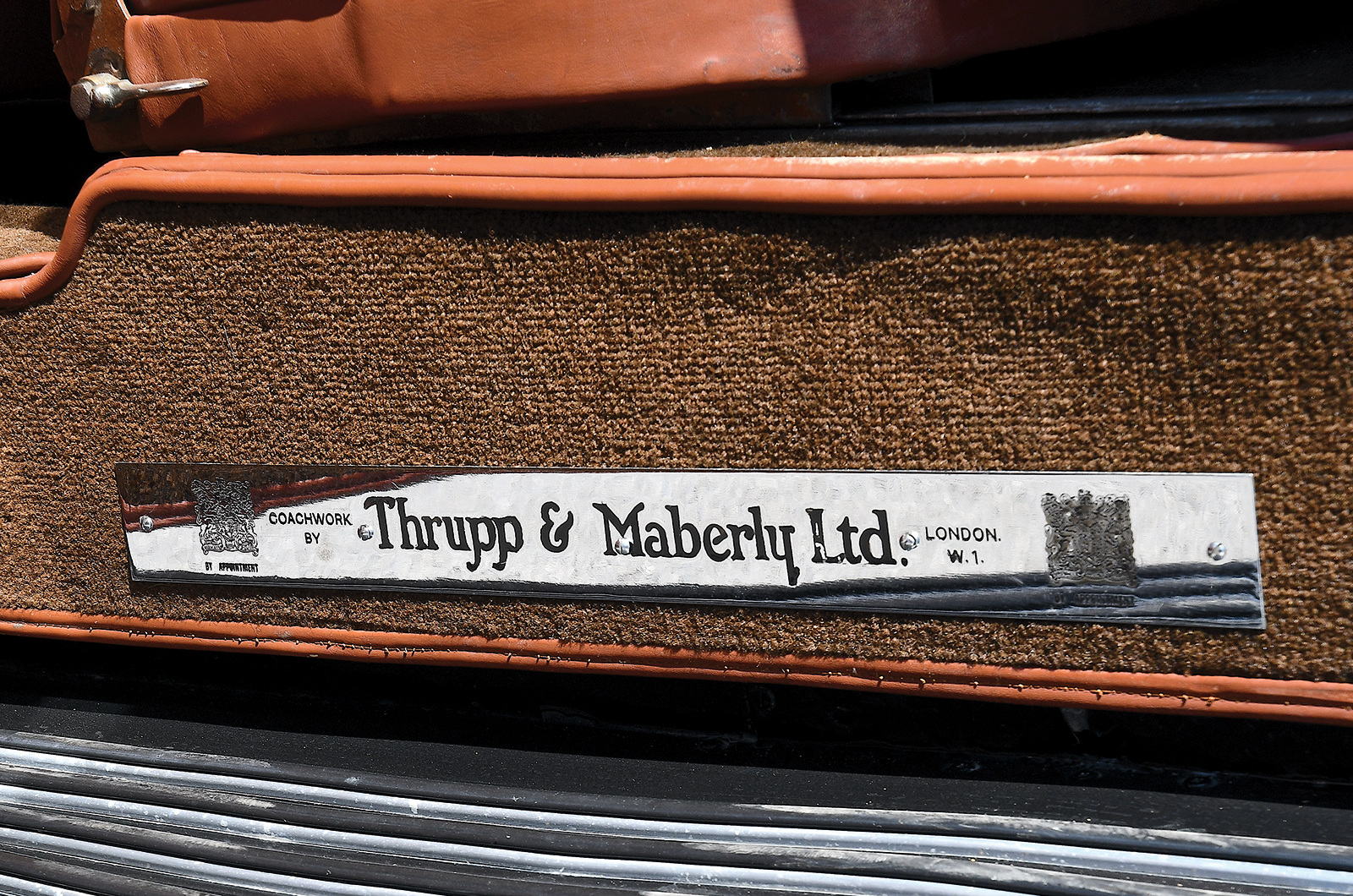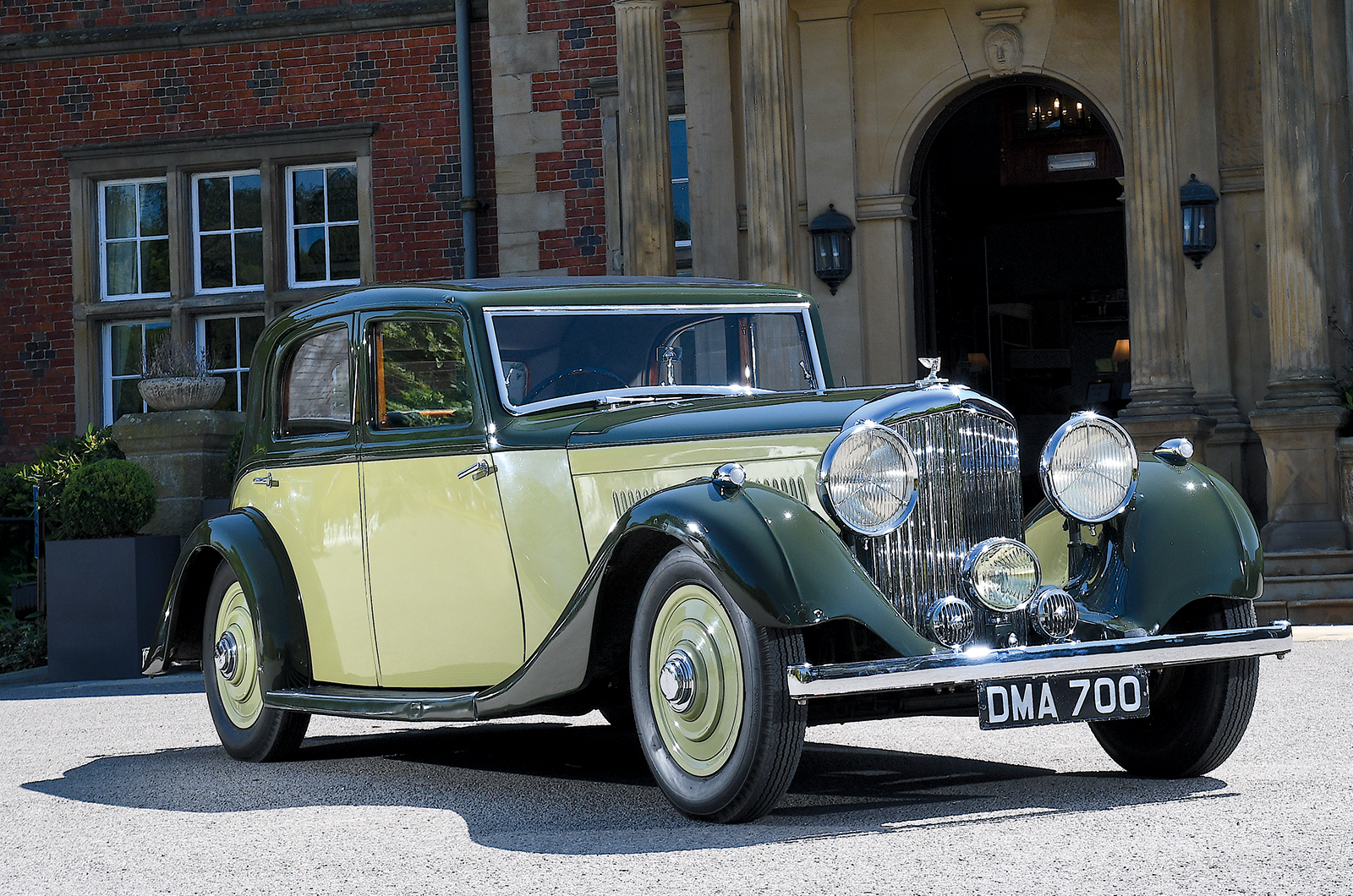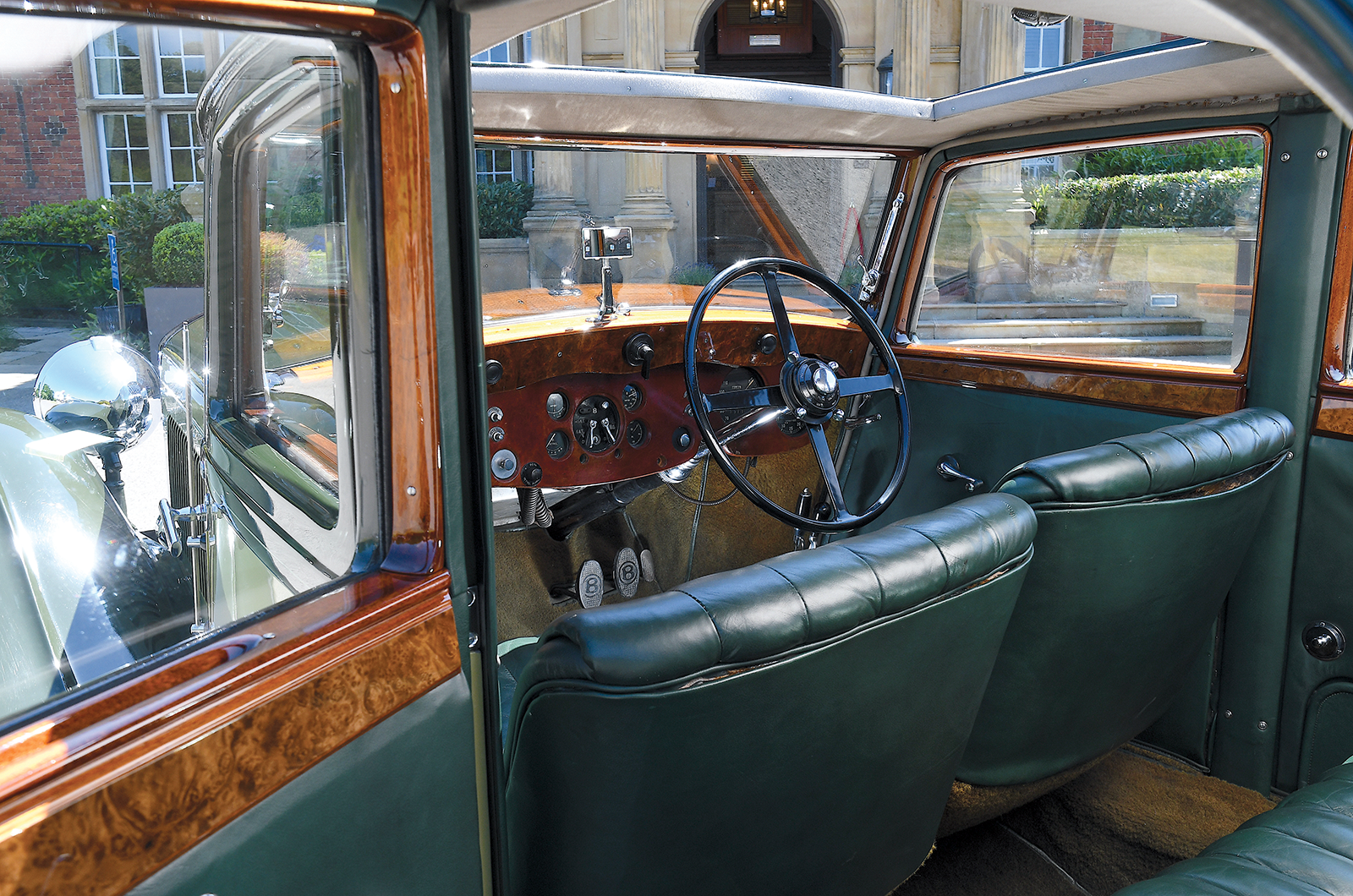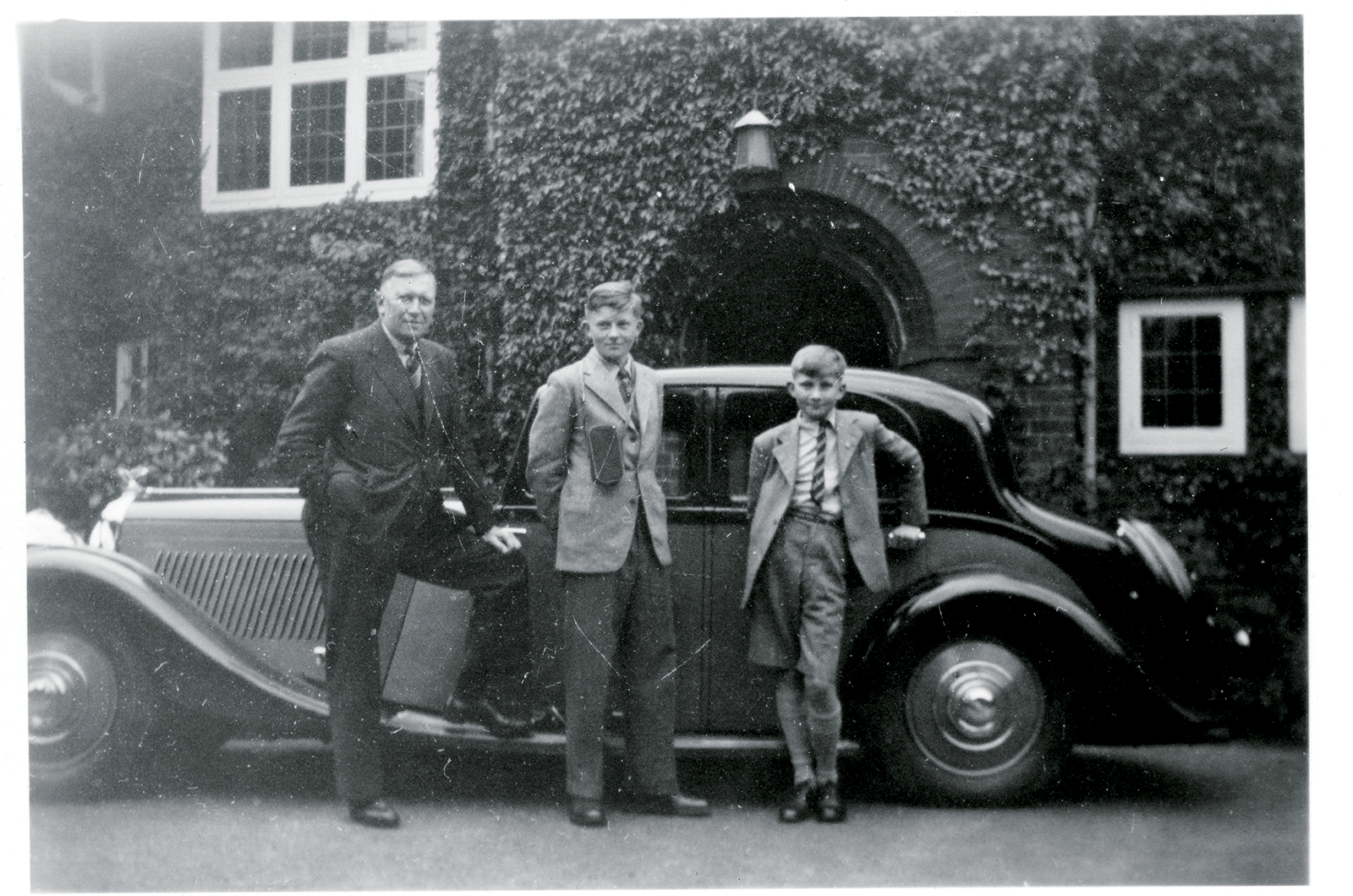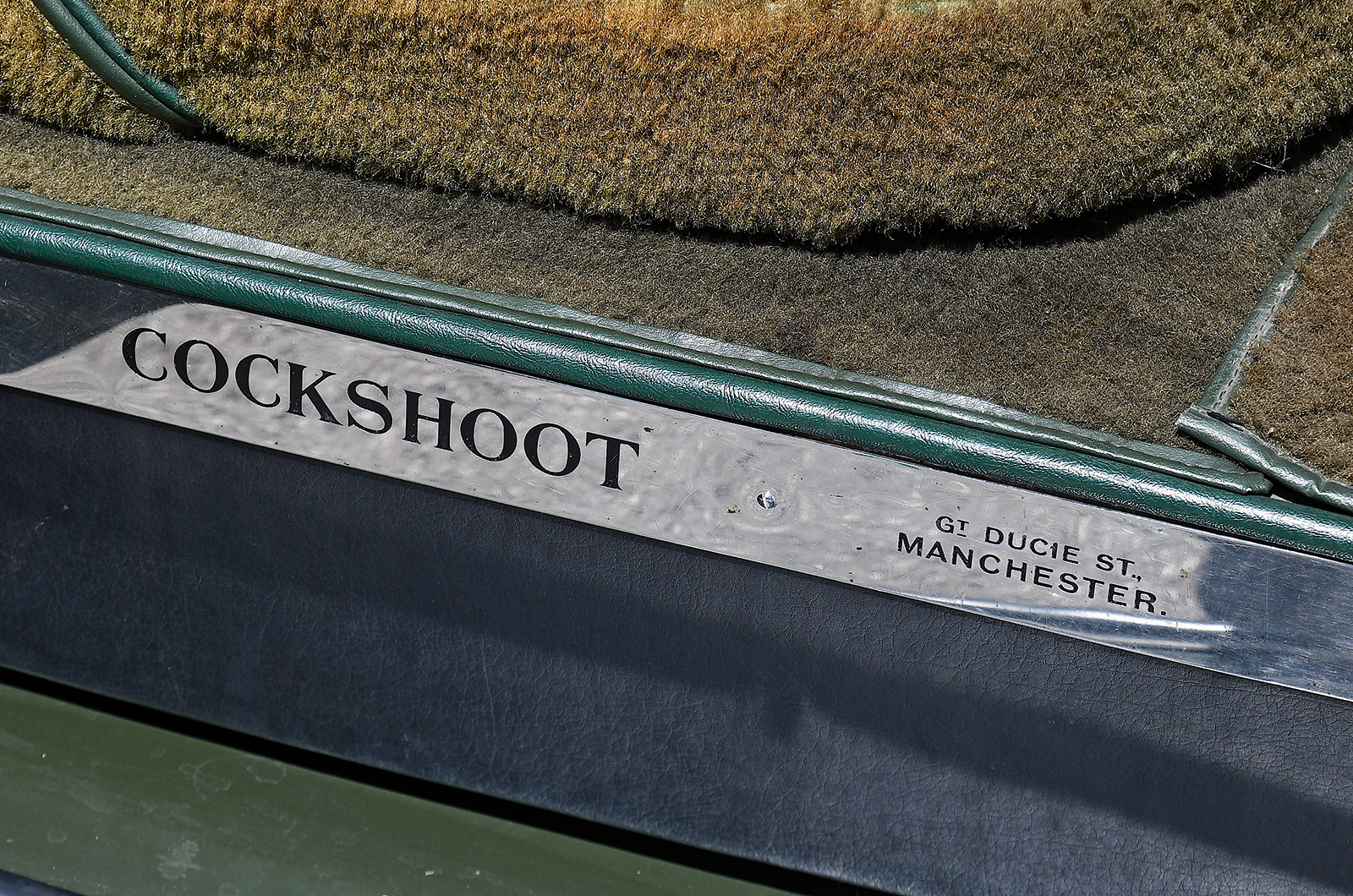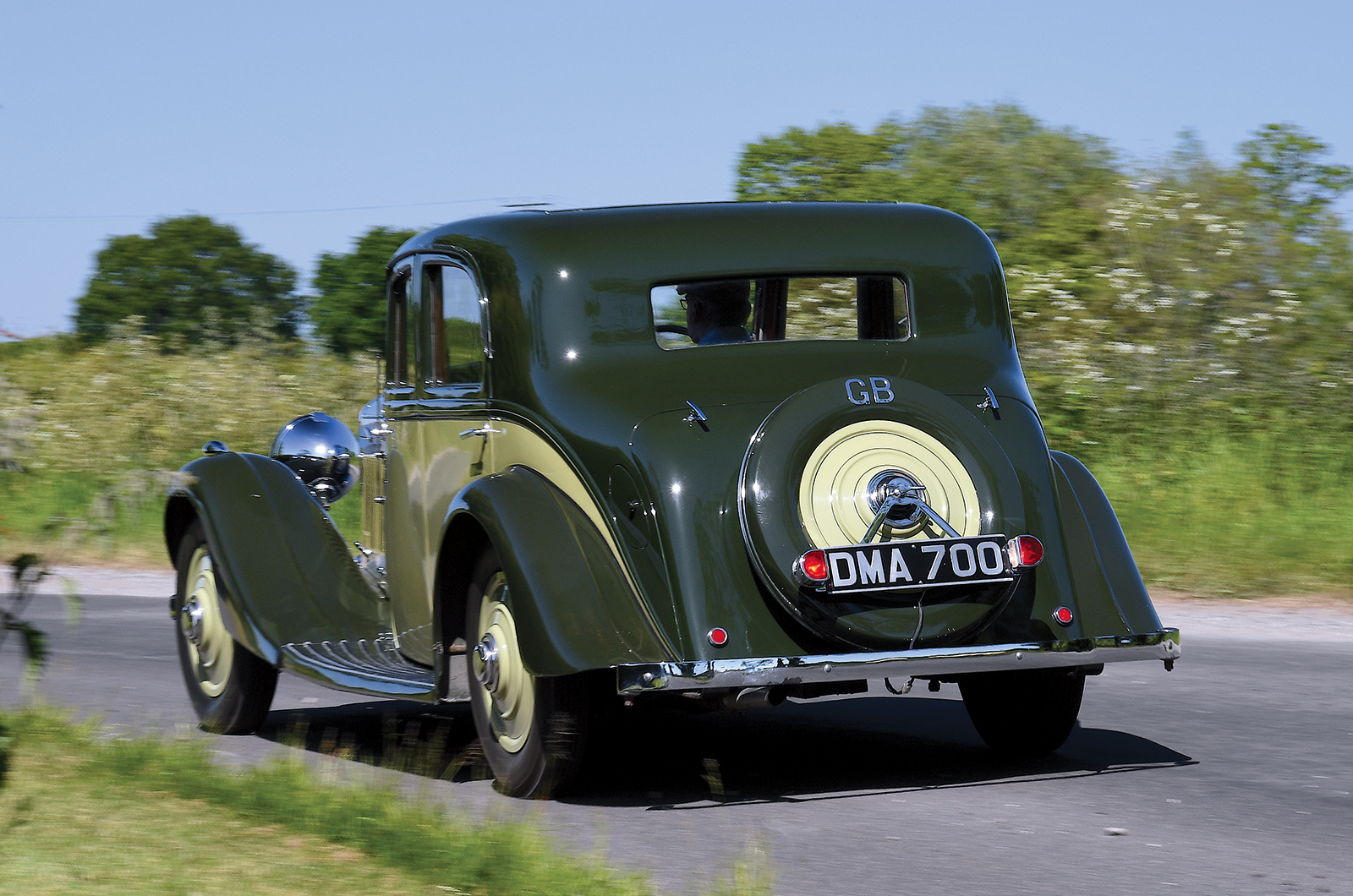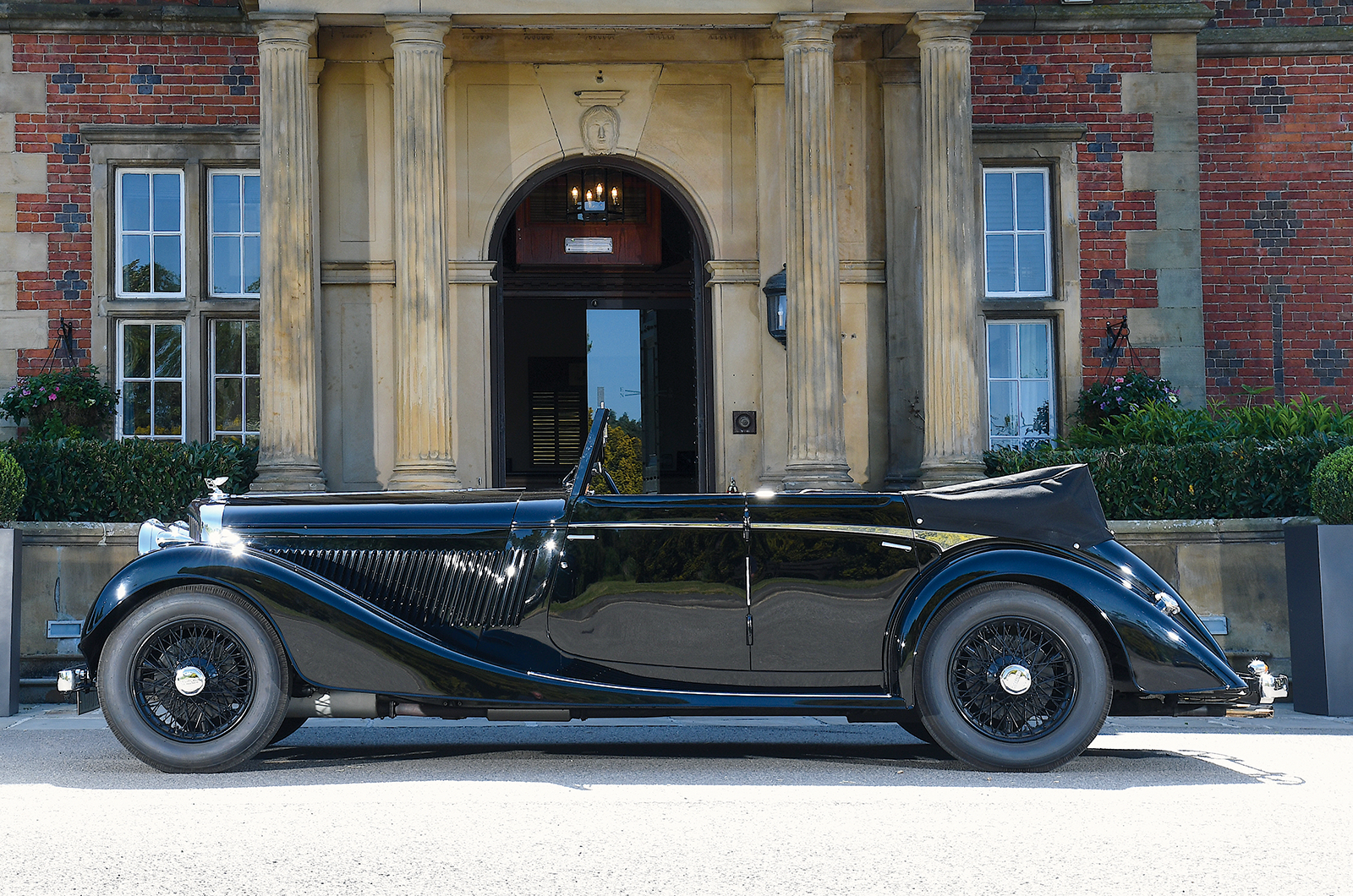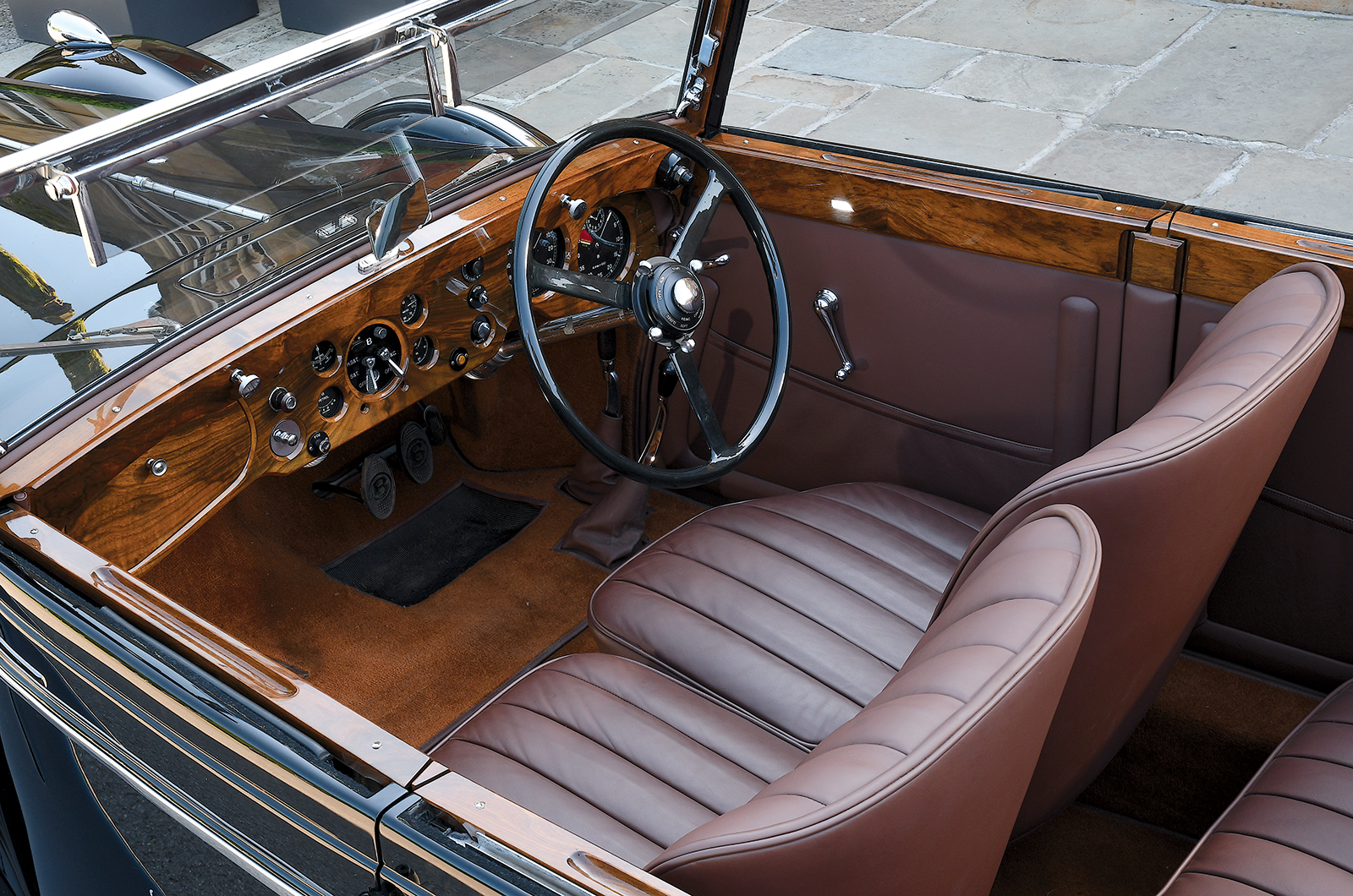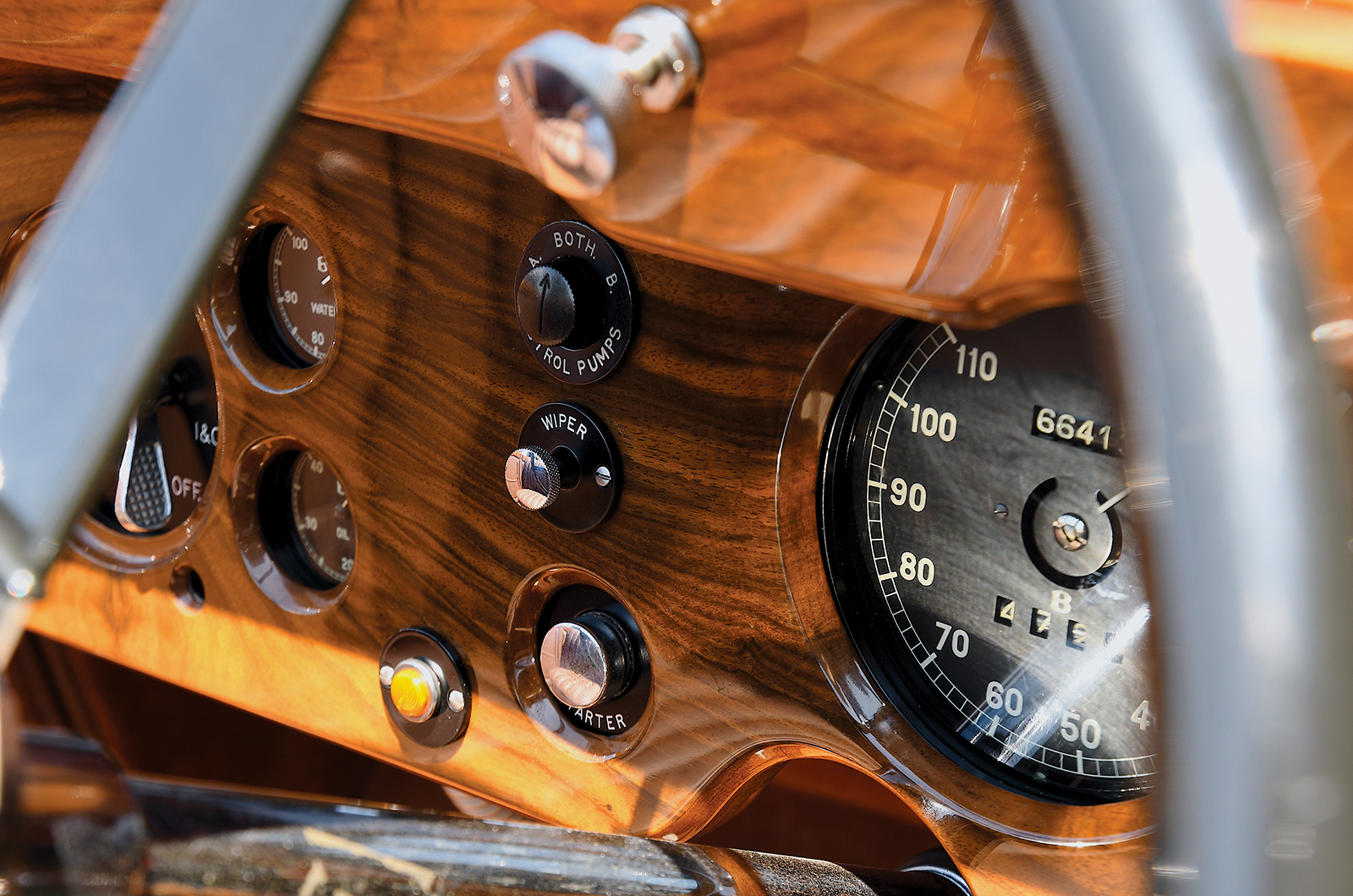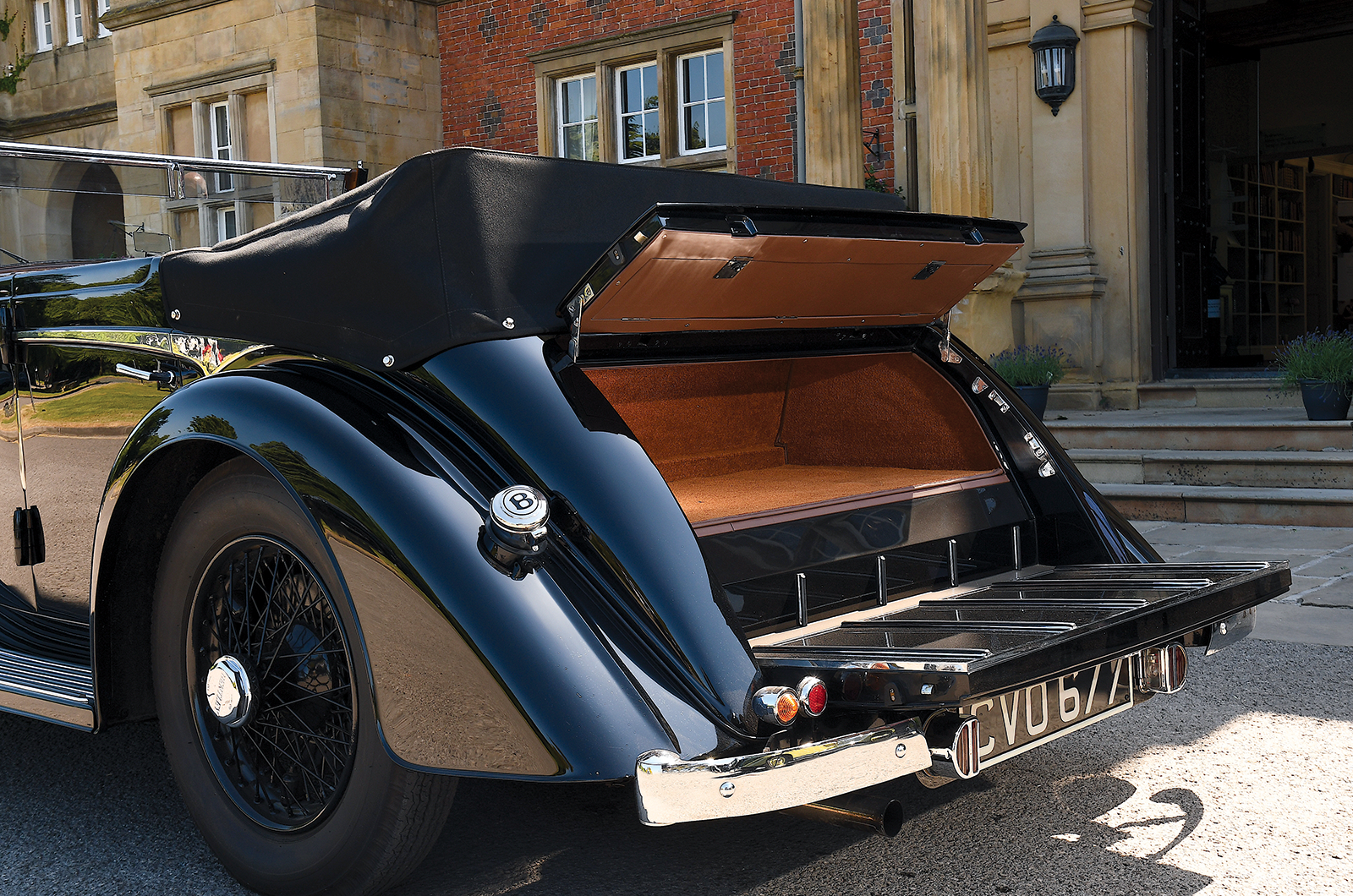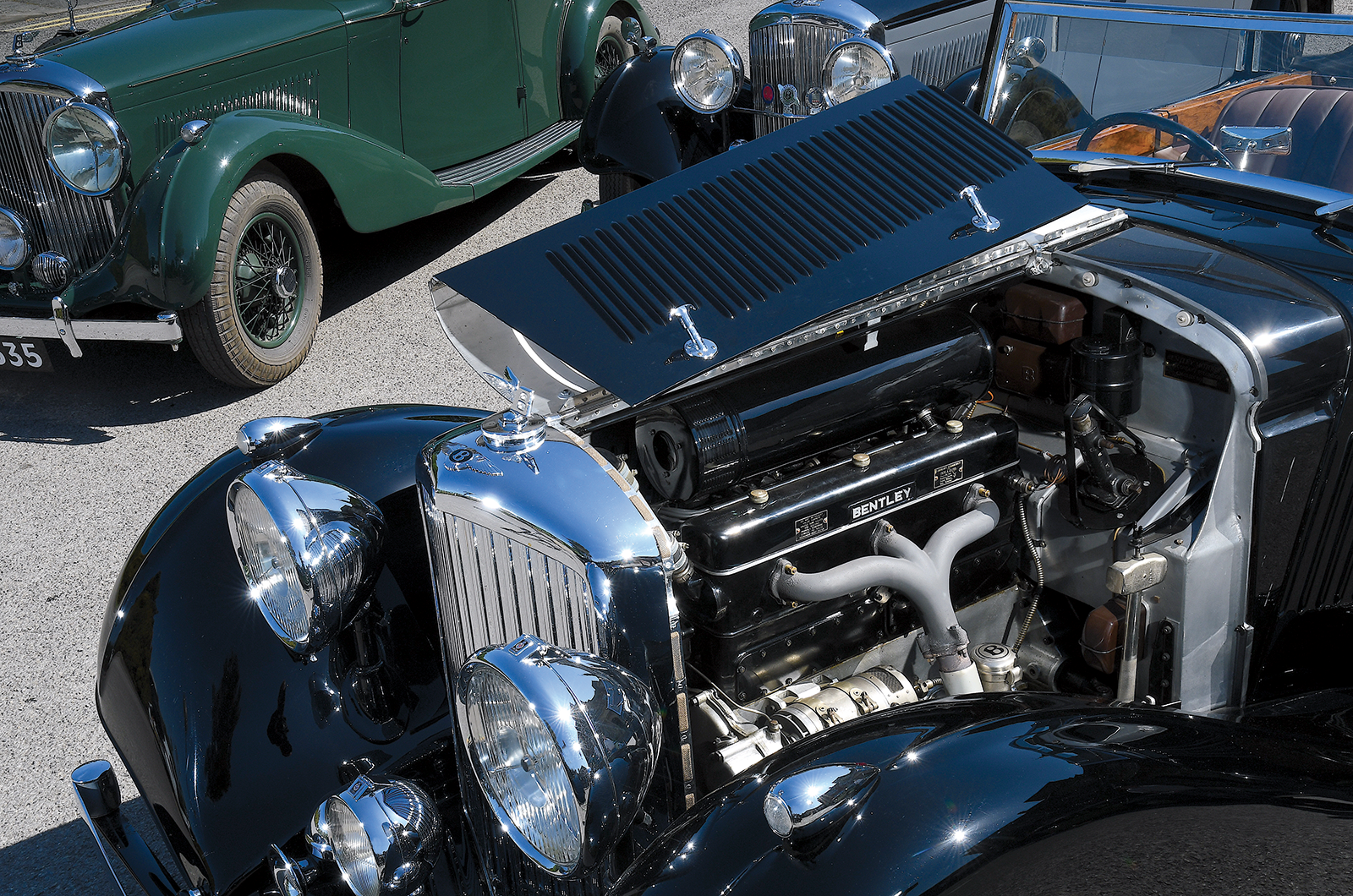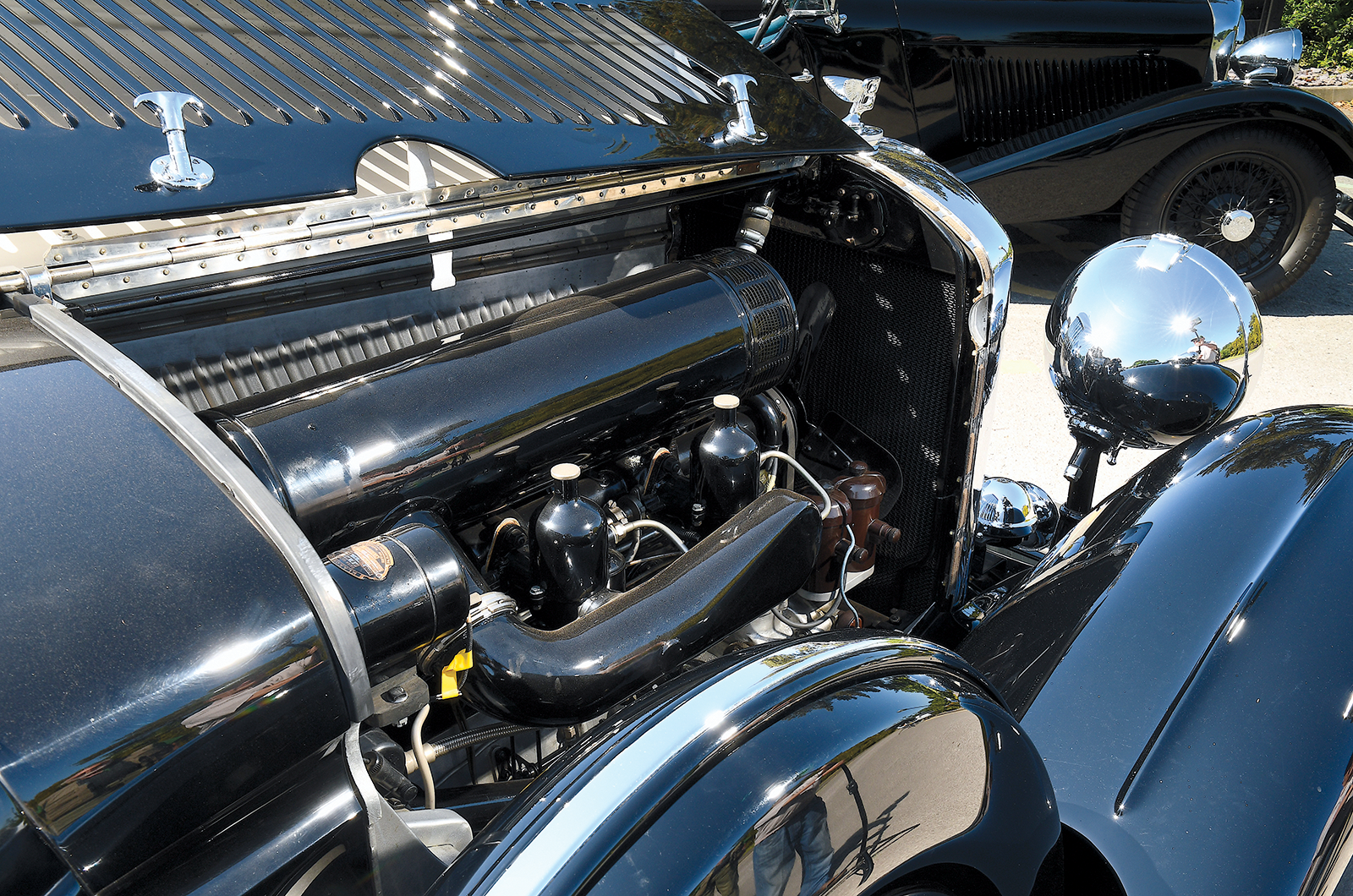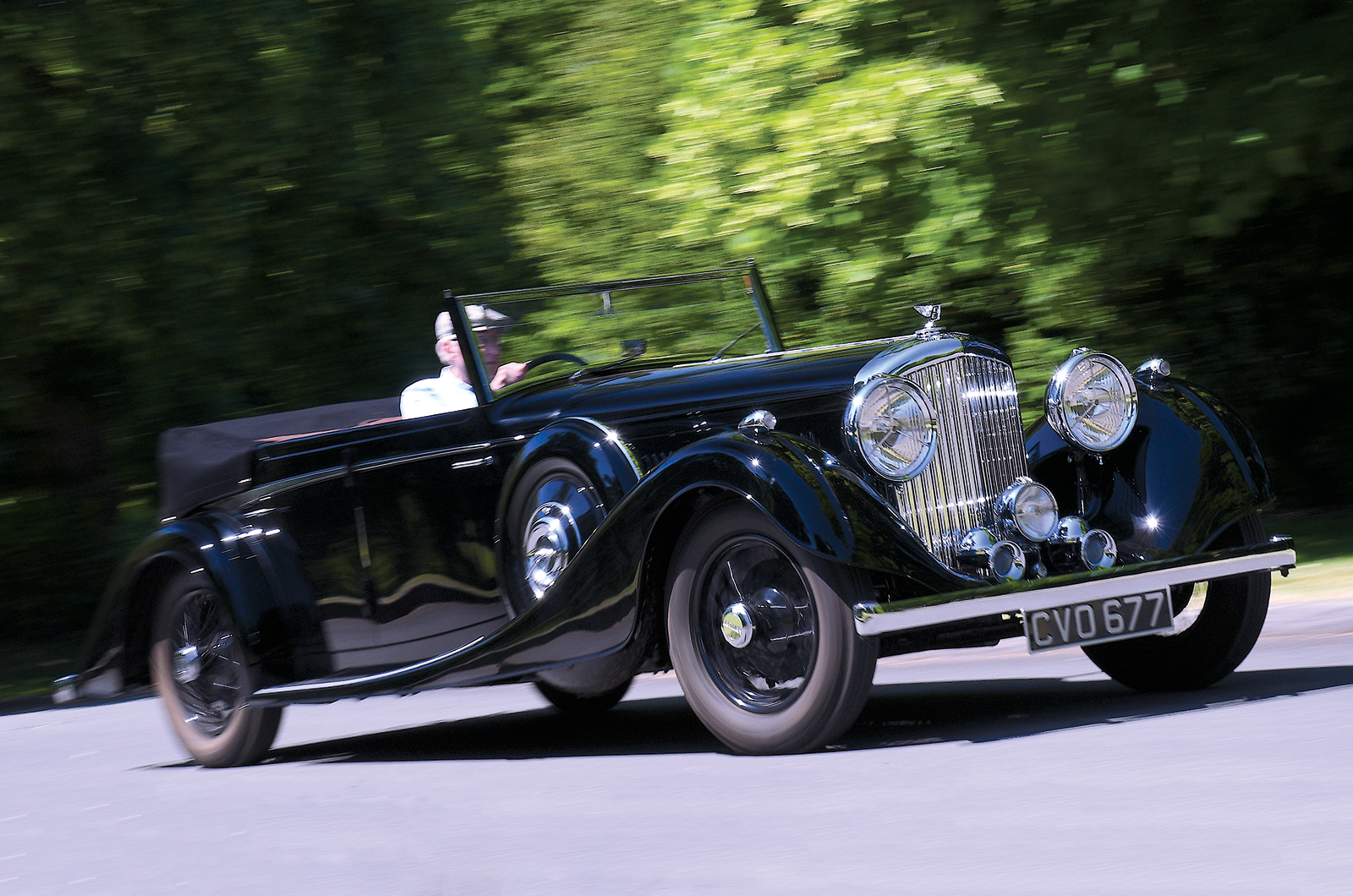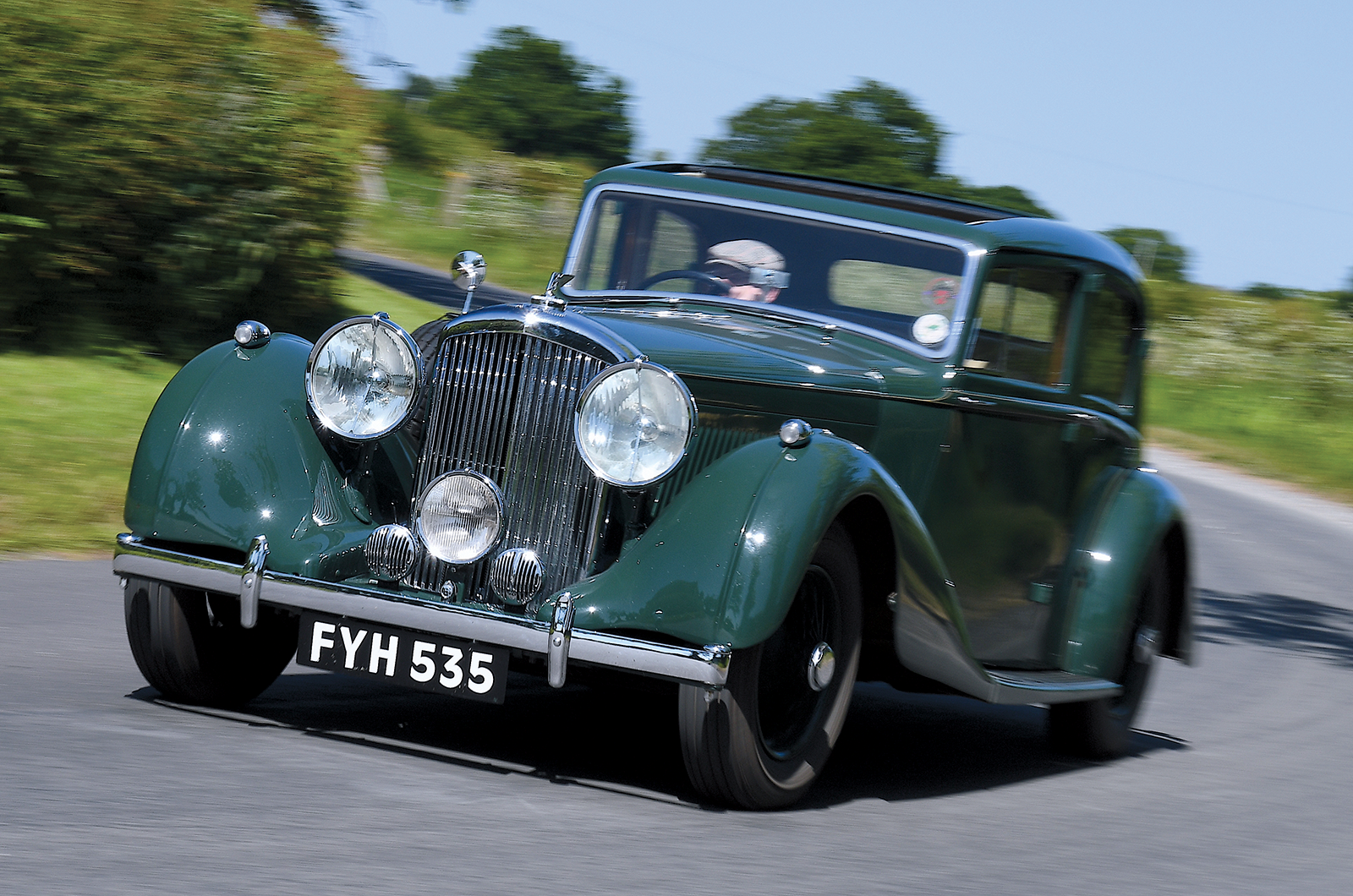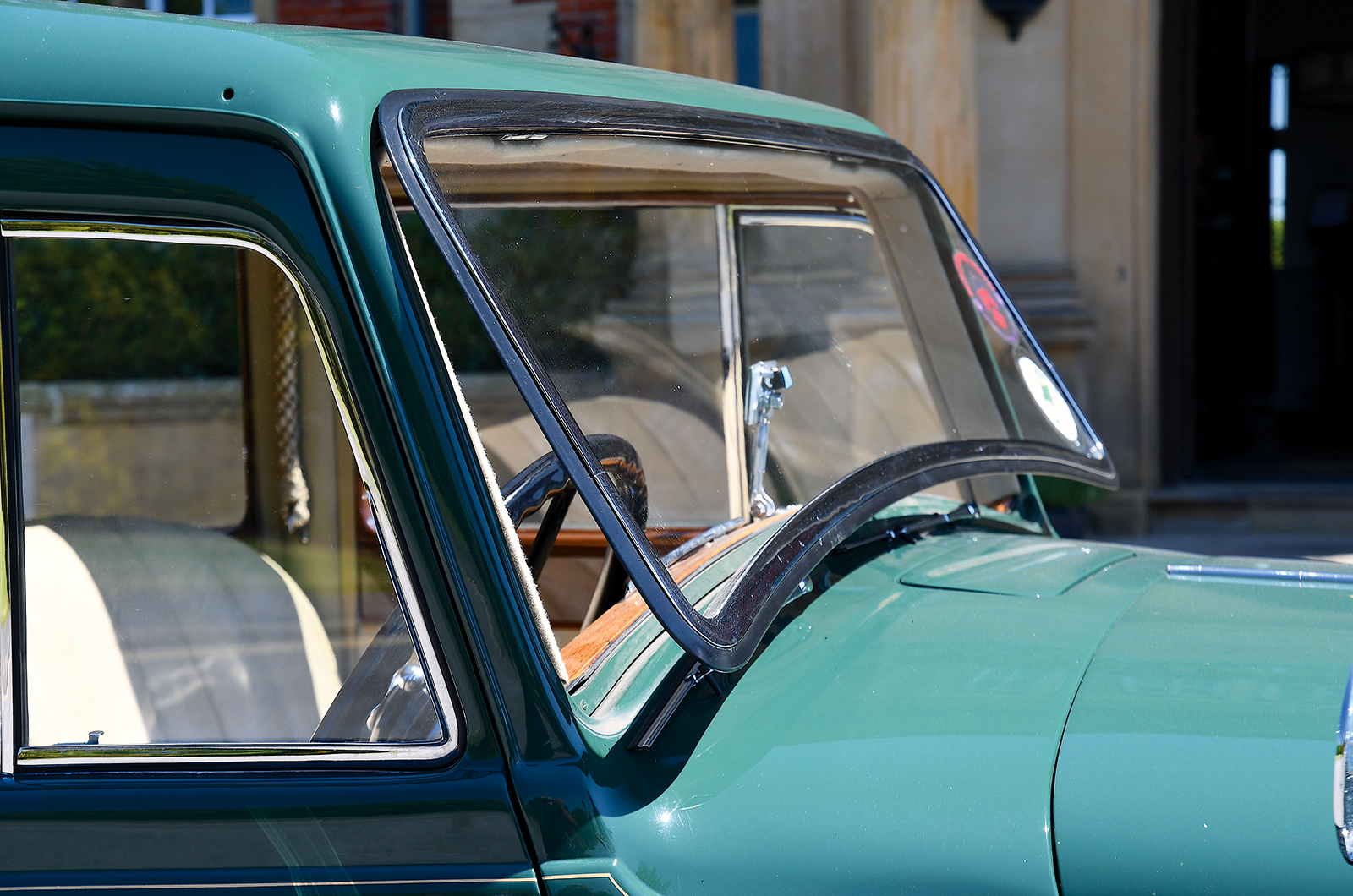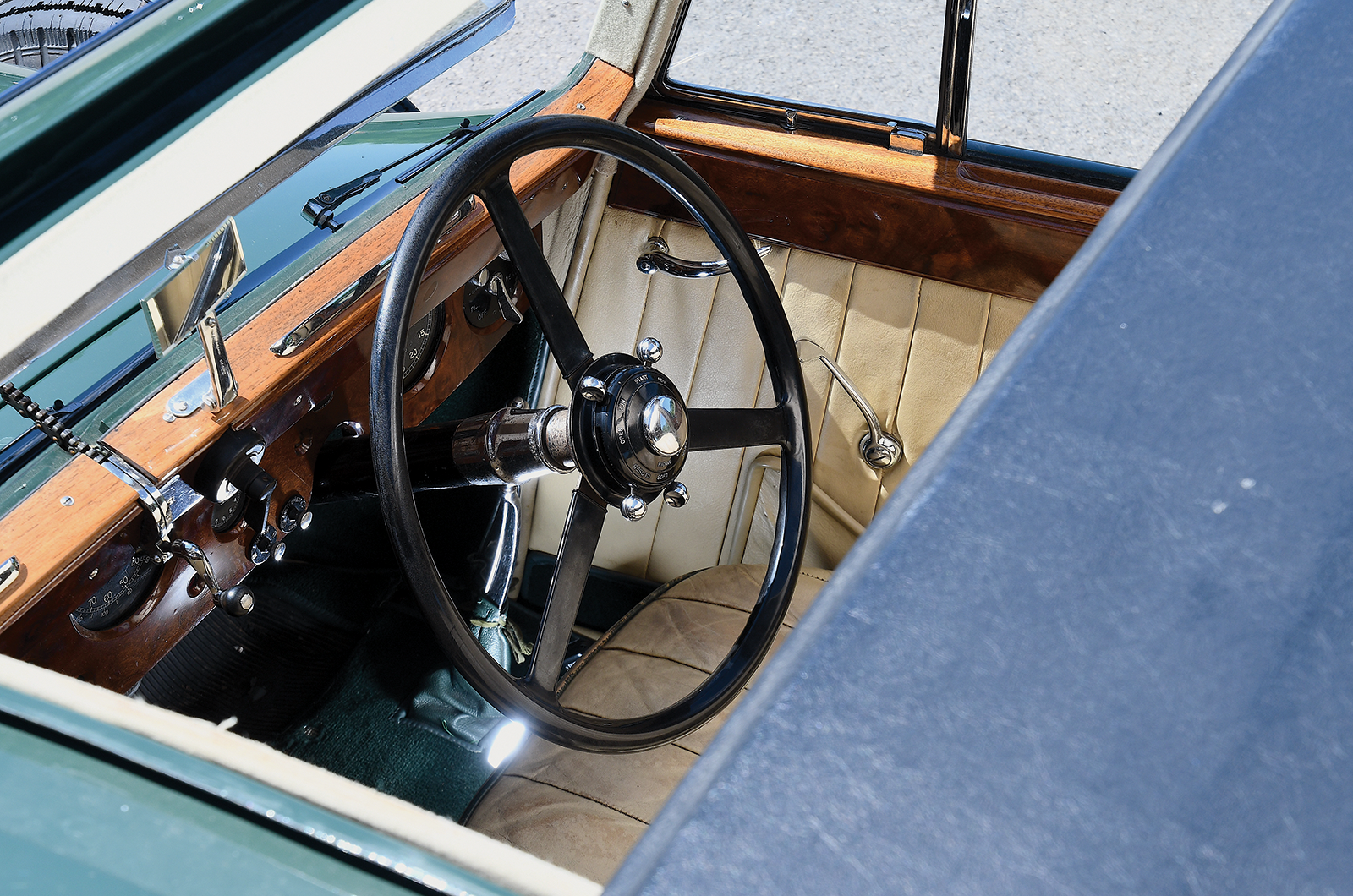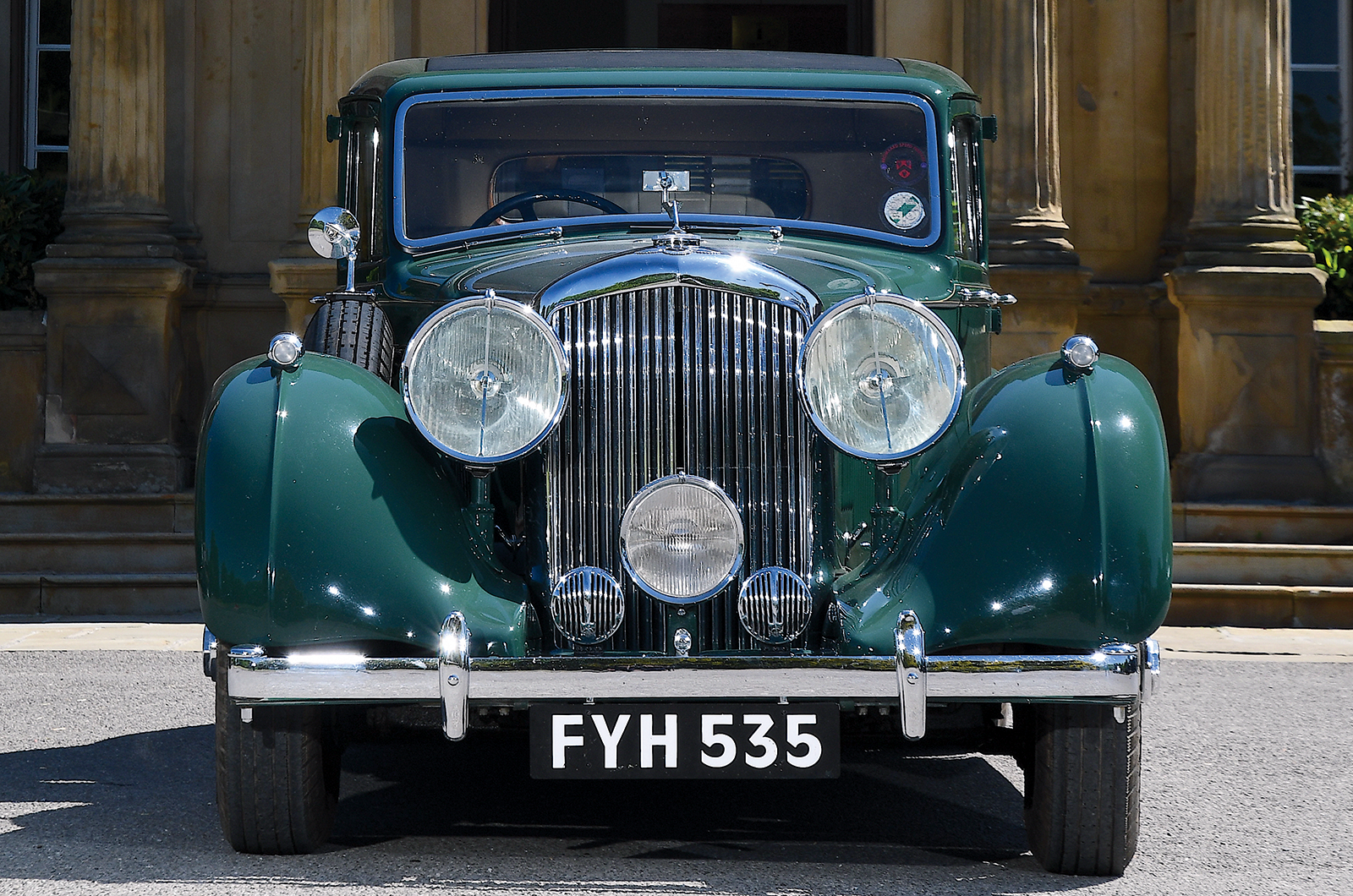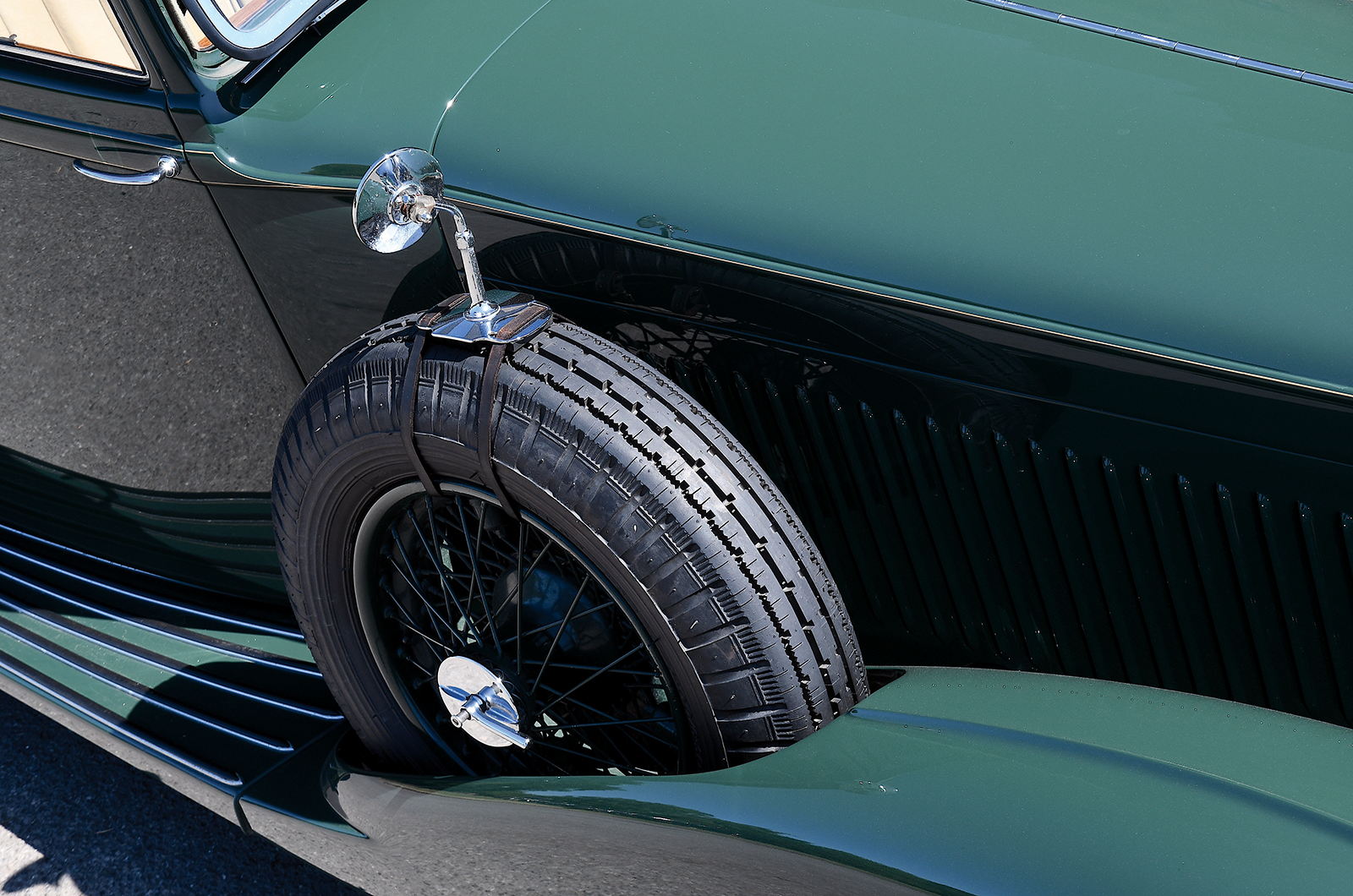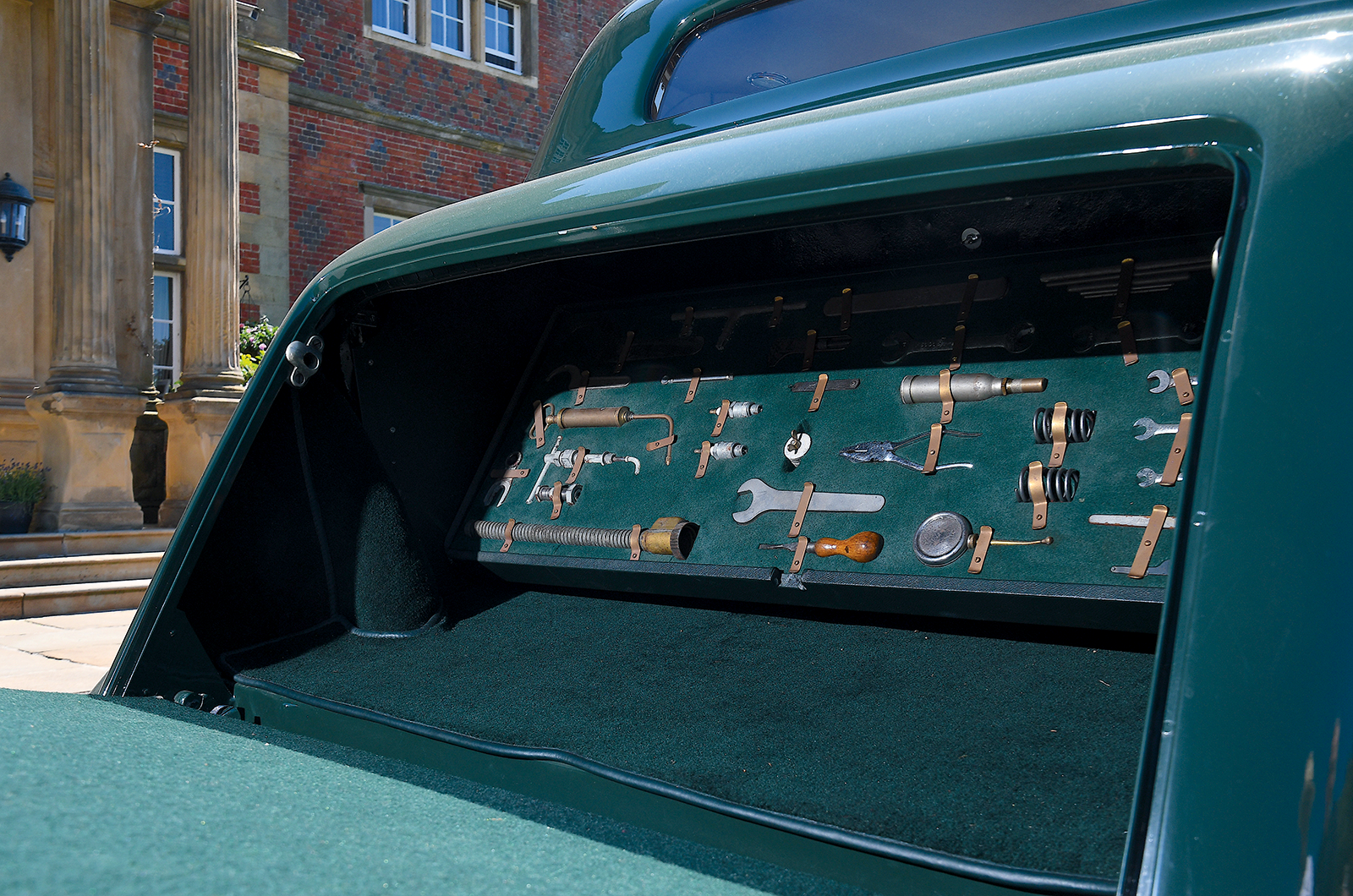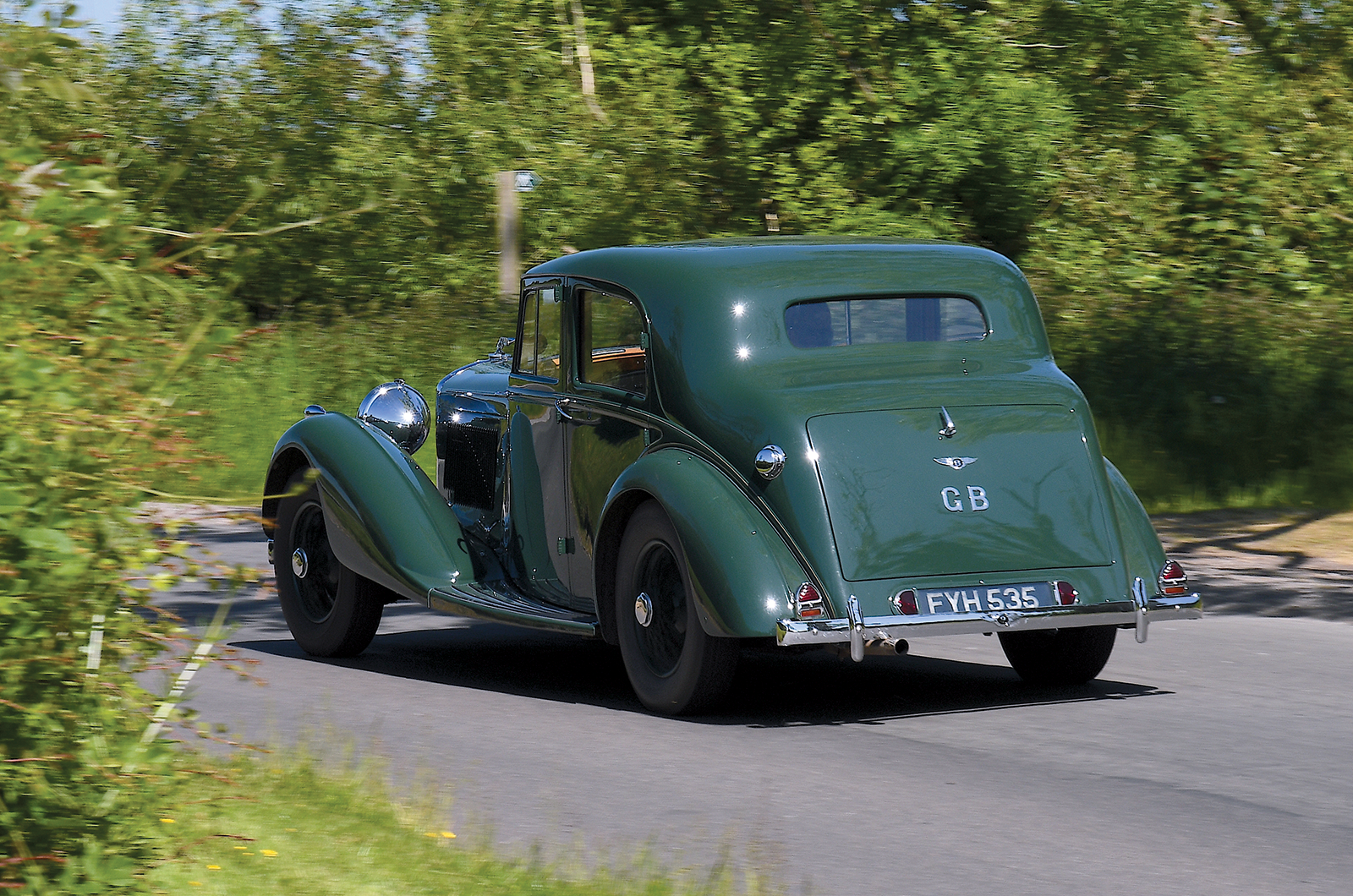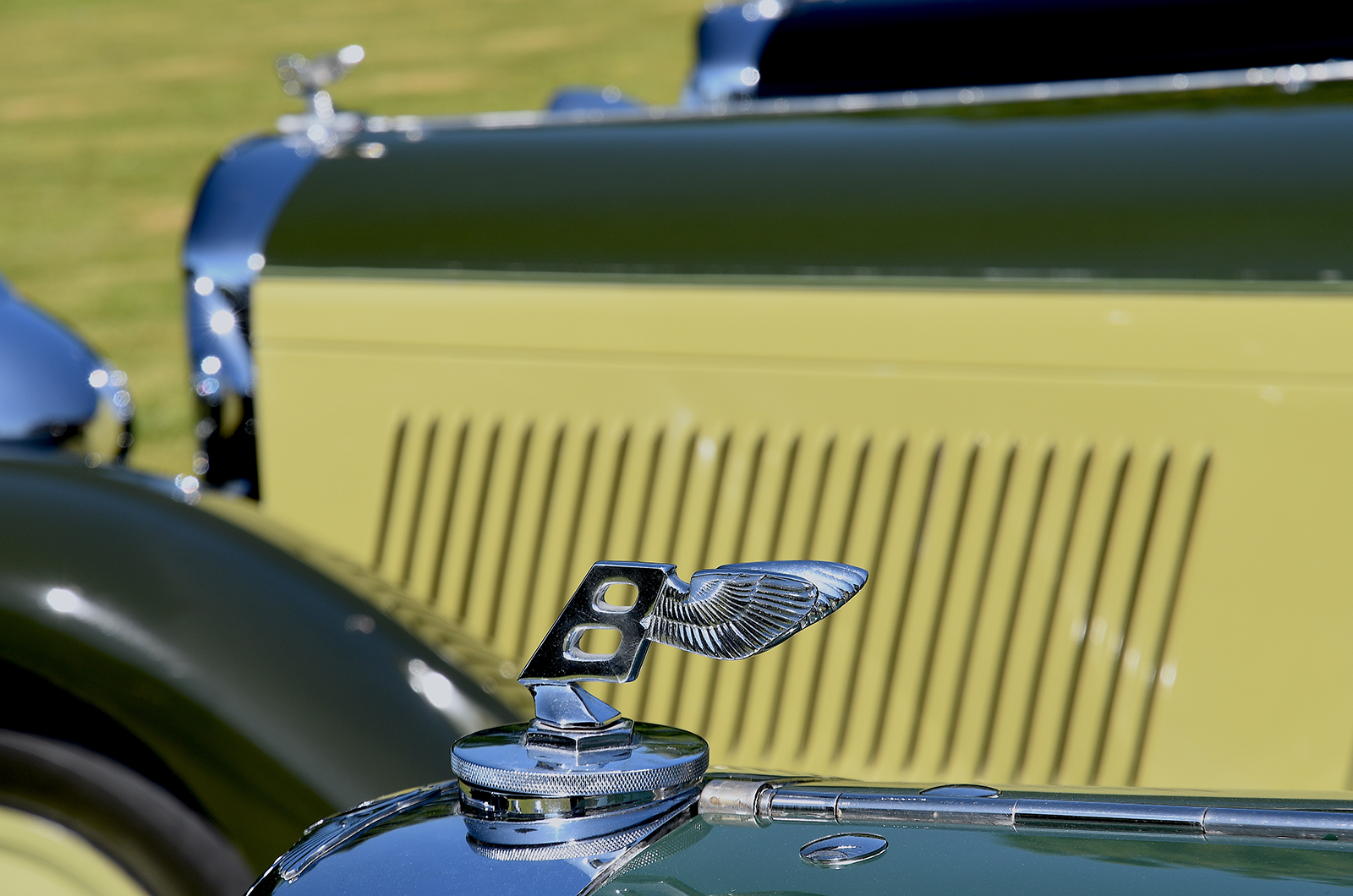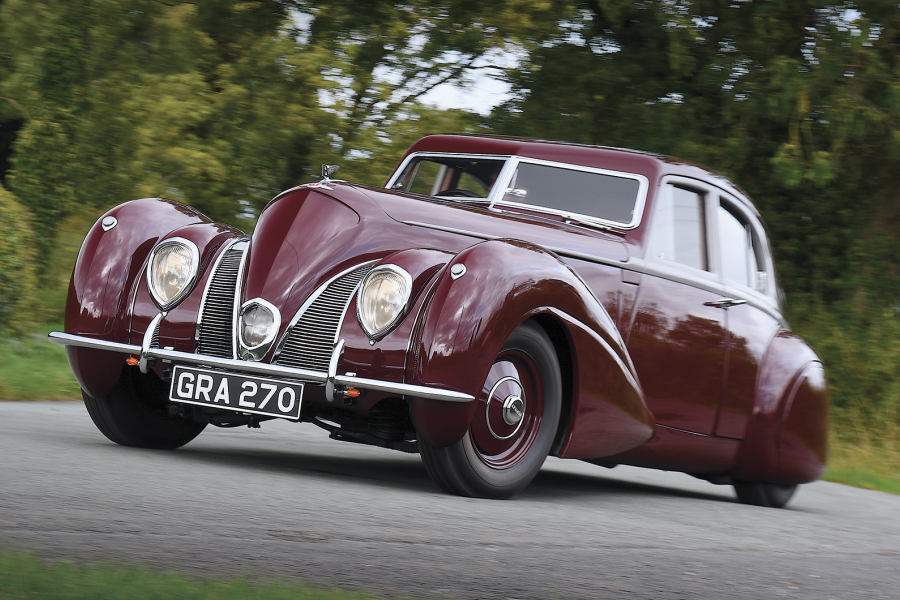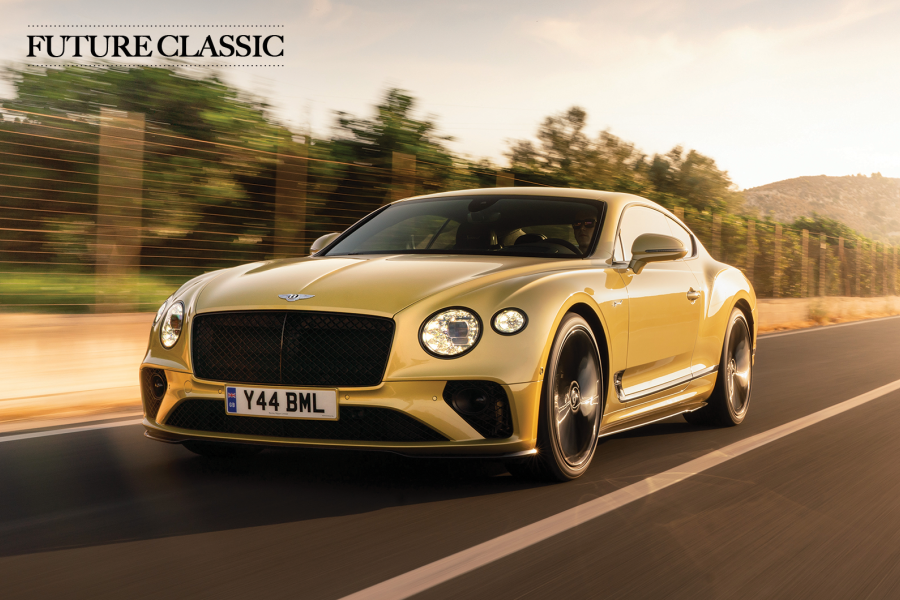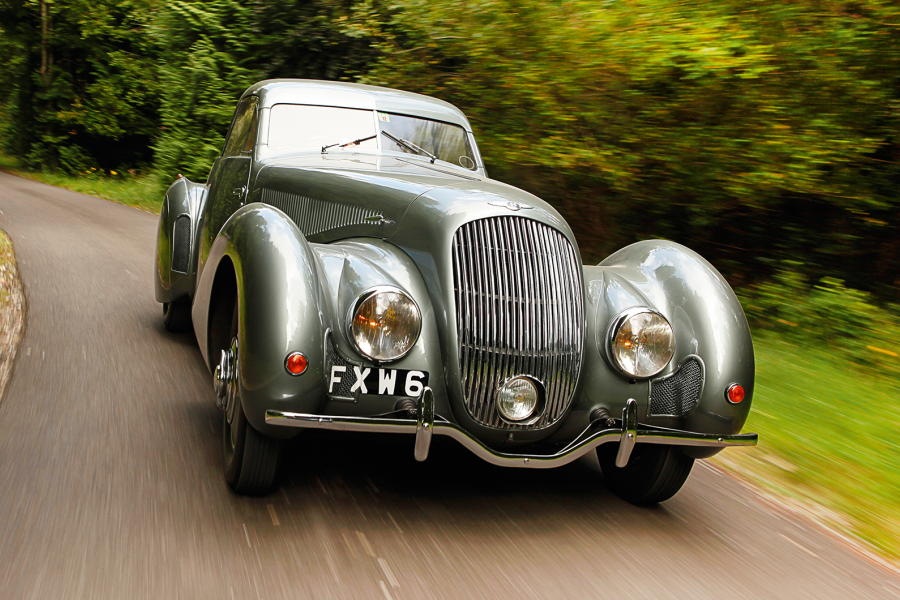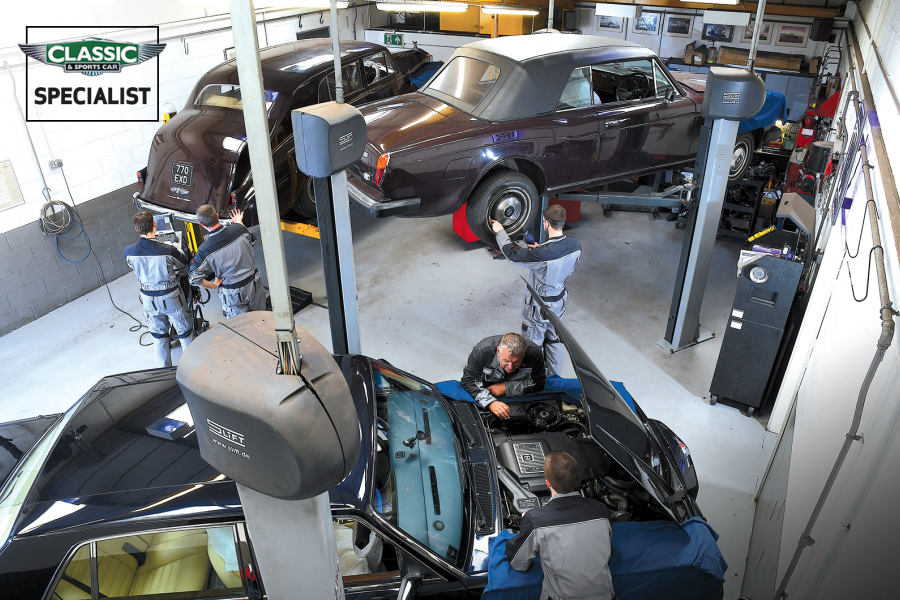The style of veneers on the dash, doors and scuttle varies in each car, but in every case it’s a work of art, and the upholstery and door trims are restrained but beautifully done.
Most have full toolkits built into their bootlids.
In the quite narrow cockpit you sit low: most of the closed cars have lots of headroom, even for very tall drivers.
The large matching speedometer and rev counter sit to the right of the steering column; in the centre is a circular switchplate and the subsidiary dials.
This Derby Bentley substitutes some boot space for its all-weather versatility
Switches are metal with a milled edge and have a crisp, engineered movement.
The big, black steering wheel – four-spoke on earlier cars, three-spoke later – has four controls around the central horn for hand throttle, choke, ignition advance/retard and soft/hard damper settings.
If the car is cold, retard the ignition, give it a bit of choke, then push the big metal button in the dash.
The engine starts at once, ticking over quietly.
Derby Bentley engines have gleaming black enamel finish, including the SU carburettors, and paired coils and fuel pumps
Push down the light clutch, snick the right-hand gearlever into first in its open gate, and once on the move take second gear because bottom, like in most cars of its time, is very low.
The steering, very heavy at parking speeds, lightens up at once.
It’s one of the Derby’s best points: you can steer with your fingertips.
The gearlever moves up and down its gate with a satisfying ‘click’.
There’s synchromesh only on third and top, but get the revs right and a swift, double-declutched downchange is child’s play.
The Bentley 4¼-litre by Vanden Plas has firm and agile handling
The brakes with their mechanical servo feel smooth and strong – although this is another Derby element that can deteriorate if not properly serviced.
The lighter VdP tourer accelerates noticeably quicker than the saloons, and its handling is precise and assured.
From the driver’s seat it feels smaller than it is, and pressing on over country roads its rigid front axle only shows if you brake late into a tight corner, which produces strong understeer.
The heavier saloons gather speed steadily and smoothly, with the majestic view down that long bonnet towards the ‘Flying B’ mascot giving a feeling of lordly control.
Smaller wheels and Marles steering make the M-series Derby Bentleys feel subtly different
If you push really hard through corners there will be roll and even tyre squeal, but this is not the right way to proceed in a Derby.
Driven as it asks to be driven, it can cover the ground rapidly and effortlessly.
A comfortable cruise is 3500rpm, which is almost exactly 70mph. At that speed the throttle opening is small and the engine is quiet.
The rev-counter’s redline is at 4500rpm, and when The Autocar tested an early four-door saloon it achieved a timed 96mph.
In 1934 this was pretty sensational stuff for a luxurious saloon weighing almost 1700kg.
This Park Ward-bodied classic Bentley has an opening windscreen
Apart from the switch to 4.25 litres, the Derby’s only major change came in 1938 with the M-series.
With more owners then touring the long, straight roads of France and the emergence of the German autobahnen, its maker was worried about the effect on the engine’s bottom end of running for long periods at high revs.
The answer was a new gearbox, with direct third and fourth at 0.85:1, giving 90mph at 3500rpm and allowing the car to be cruised at full throttle.
The beige-leather interior of the Bentley 4¼-litre M-series by Park Ward
At the same time, the worm-and-nut steering box was switched for a Marles cam-and-roller, and other changes included a revised dashboard layout with central speedometer.
Laurence Bleasdale’s M-series was first registered in November 1939, two months after war had been declared.
It has the Park Ward four-door saloon body, but the traditional ash frame under the aluminium body panels had by then been replaced by square-section steel tubing, which was lighter and more rigid.
In single-tone dark green, with exposed wire wheels and a front-wing-mounted spare, the car has great presence.
M-series Derby Bentleys have fixed radiator shutters
All four doors are hinged at their trailing edges.
The leather is beige, and the windscreen is hinged at the top so that the bottom can be wound open to help vision in icy weather – no demisters then.
It, too, has a large sliding sunshine roof.
It goes, corners and stops just like the other Derbys, but in an indefinable way it does feel different from its predecessors.
A neat side mirror sits on this Derby Bentley’s wing-mounted spare wheel
The steering needs less effort at low speeds, and the steel-framed body feels very solid.
The M-series cars have 16in wheels with 6.50-section tyres rather than 17in x 5.50s, and maybe the ride is a bit smoother on rough roads.
The M would have been followed by the MkV, with a stiffer chassis and independent front suspension, but after a handful had been built the war stopped everything.
Most of its features reappeared in 1946 on the MkVI.
The Bentley’s standard toolkit comes in a drop-down boot tray
Today, any Derby Bentley that has been properly looked after is a lovely car to drive and enjoy.
Ninety years ago – when most cars were noisy and uncomfortable, when 60mph was fast, when brakes were vague and cornering could be hazardous – it must have been a revelation.
But in our 21st century, when all classic cars, good, bad and indifferent, are cherished, the Derby Bentley hasn’t had the credit it deserves.
Maybe that’s because in its day it was so successful: it has never been rare.
This Park Ward-bodied Derby Bentley is lovely to drive
A dealer trying to make me consider an offer for my own car (which is not for sale) reckoned: “If they’d only made 35 Derbys instead of 2400, if they were as rare as Bugatti Type 57s, they’d be worth millions.”
As someone who was just about able to scrape together the funds to buy my Derby Bentley 30 years ago, I’m very glad they’re not.
Don’t call me biased, but as a classic motoring experience, and a glimpse of how the rich lived back then, the Derby Bentley is one of the great cars of its time.
Images: John Bradshaw
Thanks to: Bernard King and the De Vere Cranage Estate
Factfiles
Bentley 3½-litre
- Sold/number built 1934-‘36/1177
- Construction steel chassis, aluminium body on ash frame
- Engine iron block and head, alloy crankcase, ohv 3669cc straight-six, twin SU carburettors
- Max power 114bhp @ 4500rpm
- Max torque not quoted
- Transmission four-speed manual, RWD
- Suspension: front semi-elliptic leaf springs rear live axle, semi-elliptic leaf springs; hydraulic dampers f/r with driver override
- Steering worm and nut
- Brakes finned drums, with servo
- Length 14ft 6in (4420mm)
- Width 5ft 9in (1752mm)
- Height 5ft 2in (1574mm)
- Wheelbase 10ft 6in (3200mm)
- Weight 3540lb (1605kg)
- Mpg 17
- 0-60mph 18.4 secs
- Top speed 93mph
- Price new £1100 (1934, chassis)
- Price now £50-450,000*
Bentley 4¼-litre
(where different to 3½-litre)
- Sold/number built 1936-‘38/1033
- Engine 4257cc
- Max power 125bhp @ 4500rpm
- Weight 3752lb (1702kg)
- 0-60mph 15.5 secs
- Top speed 96mph
- Price new £1150 (1938, chassis)
Bentley 4¼-litre MR/MX series
(where different to 4¼-litre)
- Sold/number built 1938-‘39/201
- Transmission four-speed manual with direct third and overdrive top
- Steering cam and roller
- Price new £1150 (1938, chassis)
*Prices correct at date of original publication
Enjoy more of the world’s best classic car content every month when you subscribe to C&SC – get our latest deals here
READ MORE
The story of Bentley: from Blowers to Speed 8 and beyond
Lagonda V12 Rapide: WO Bentley’s masterpiece
Golden years: driving a special Derby Bentley
Simon Taylor
Simon Taylor is C&SC’s Editor at Large and has been associated with the brand since he launched it in 1982
